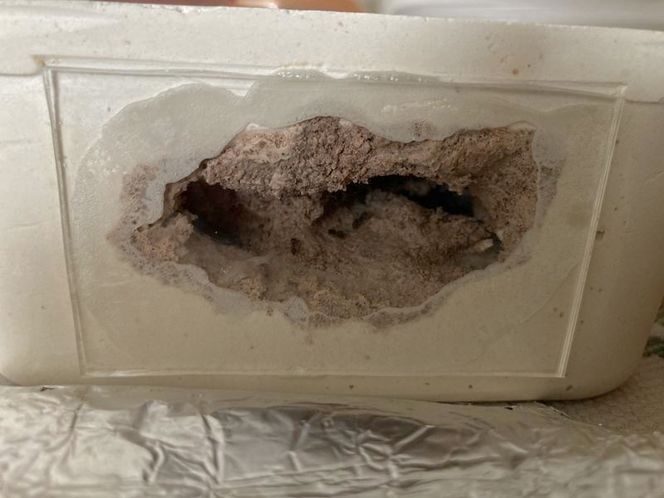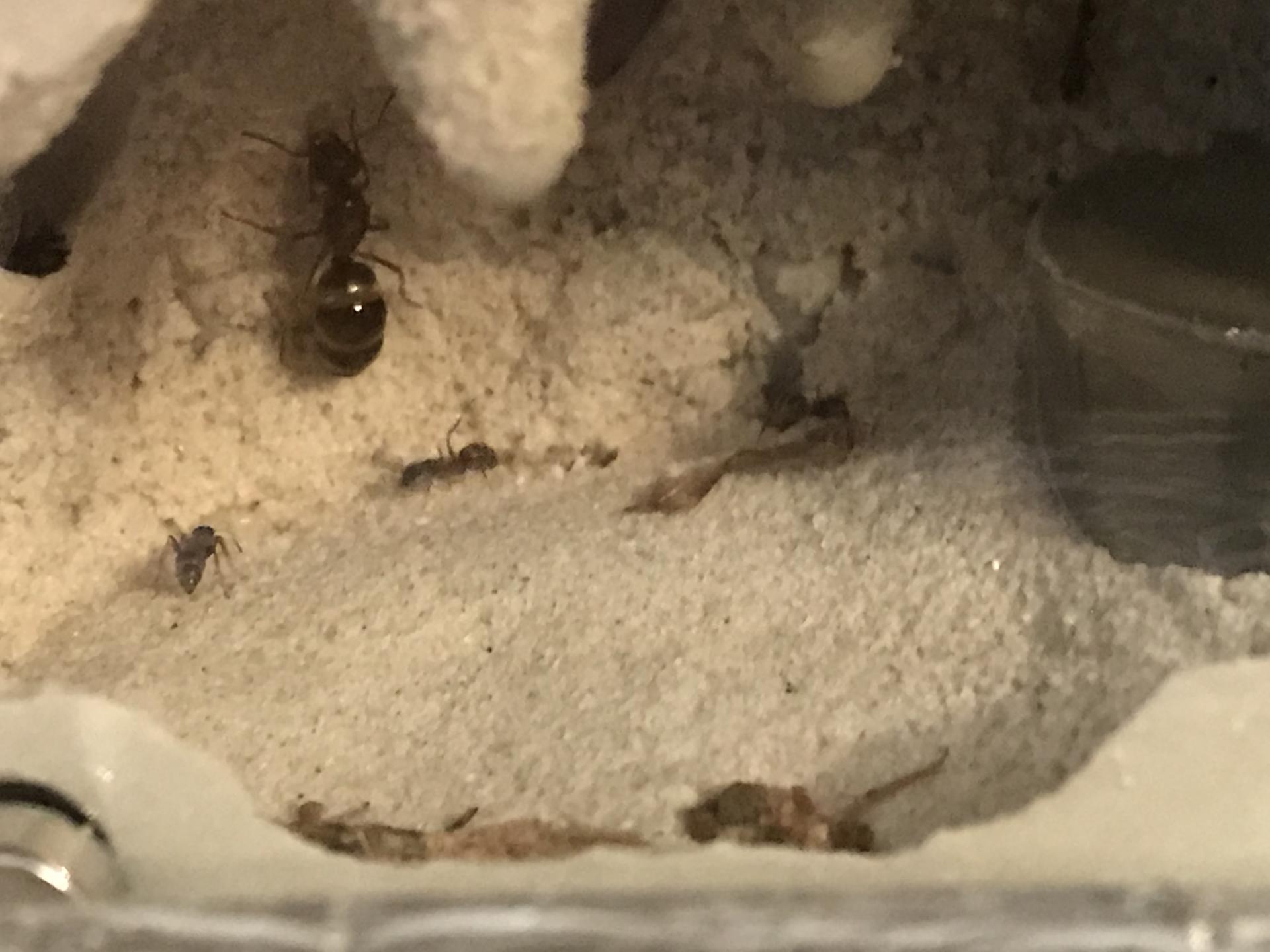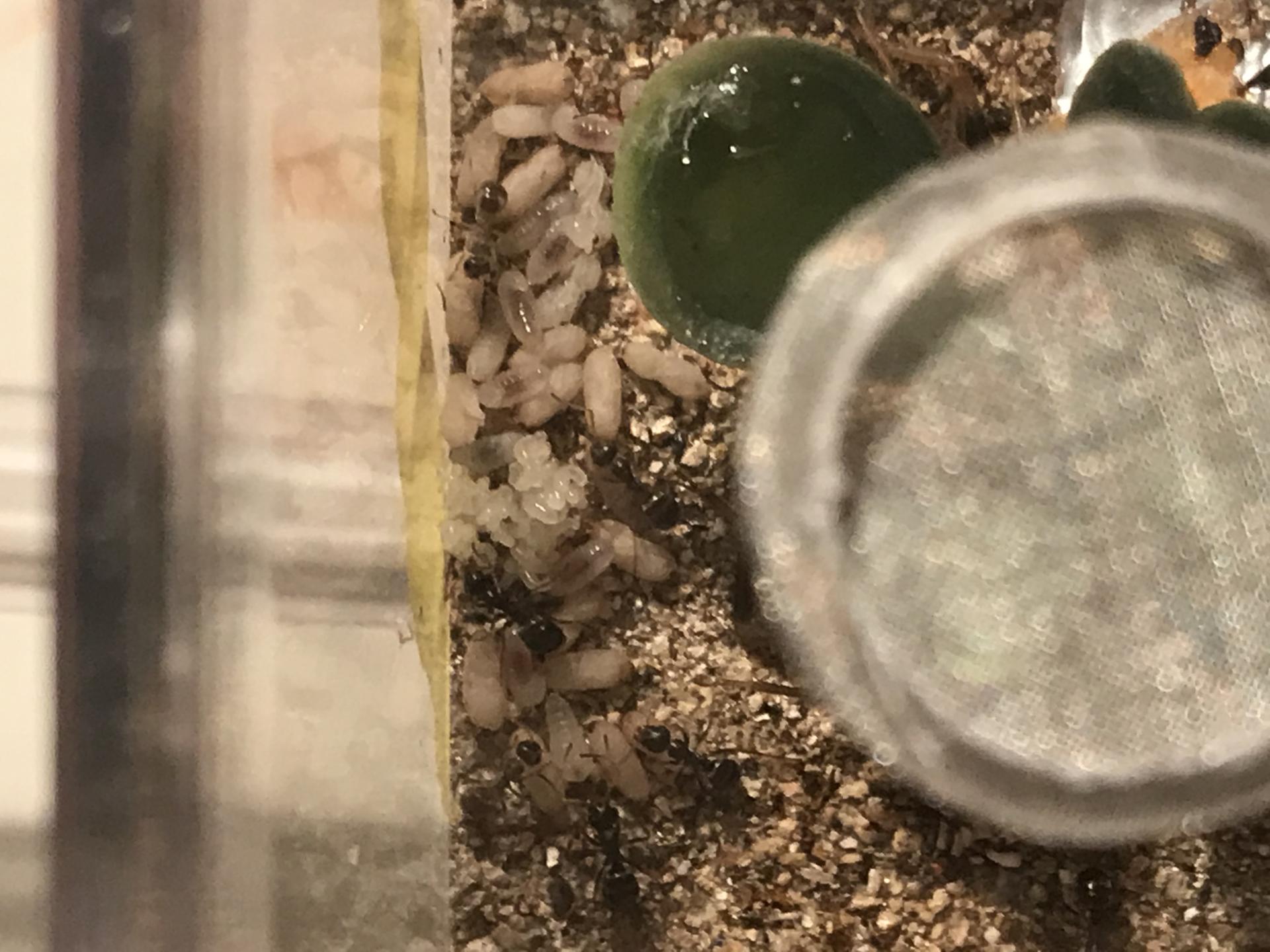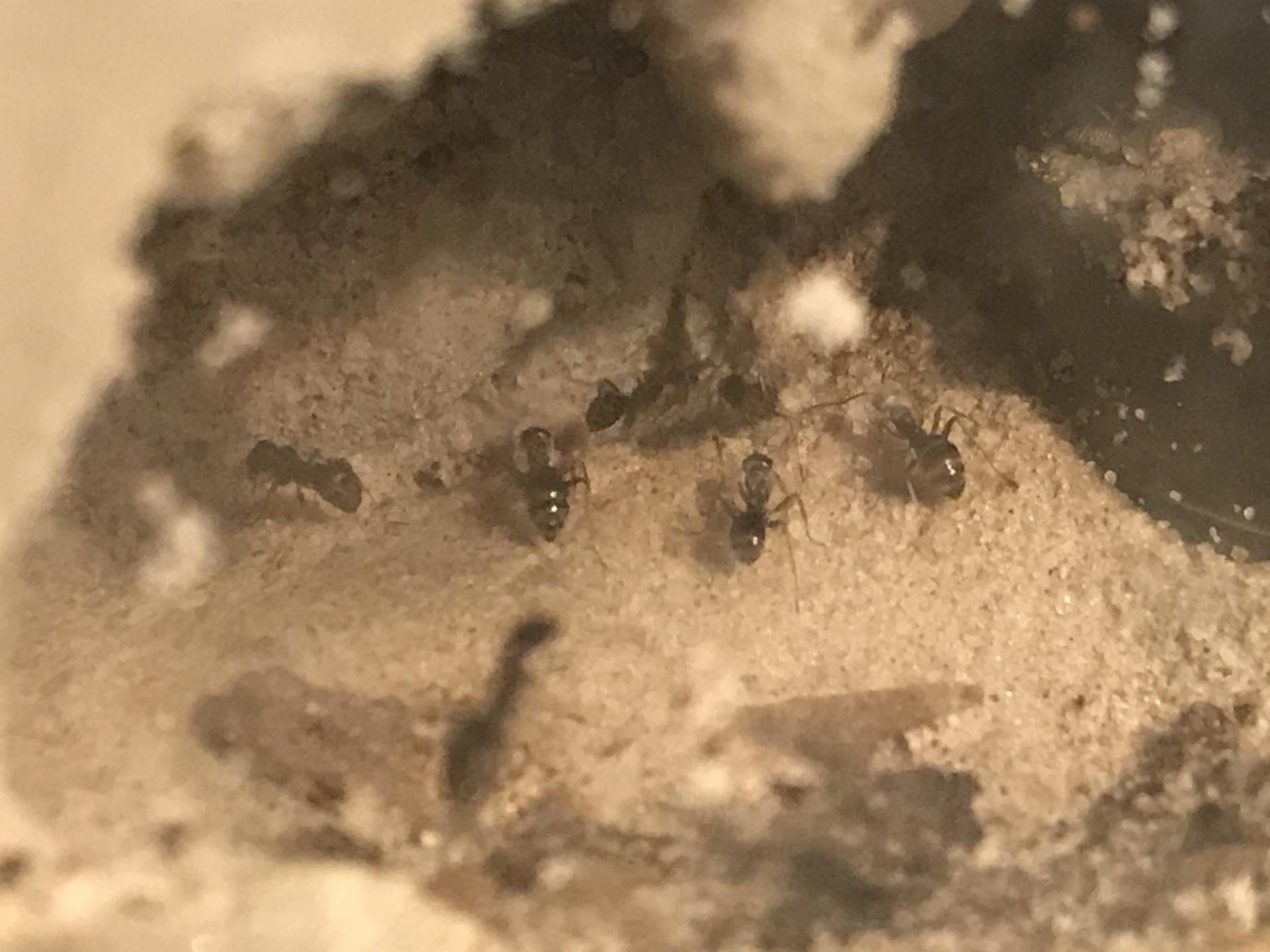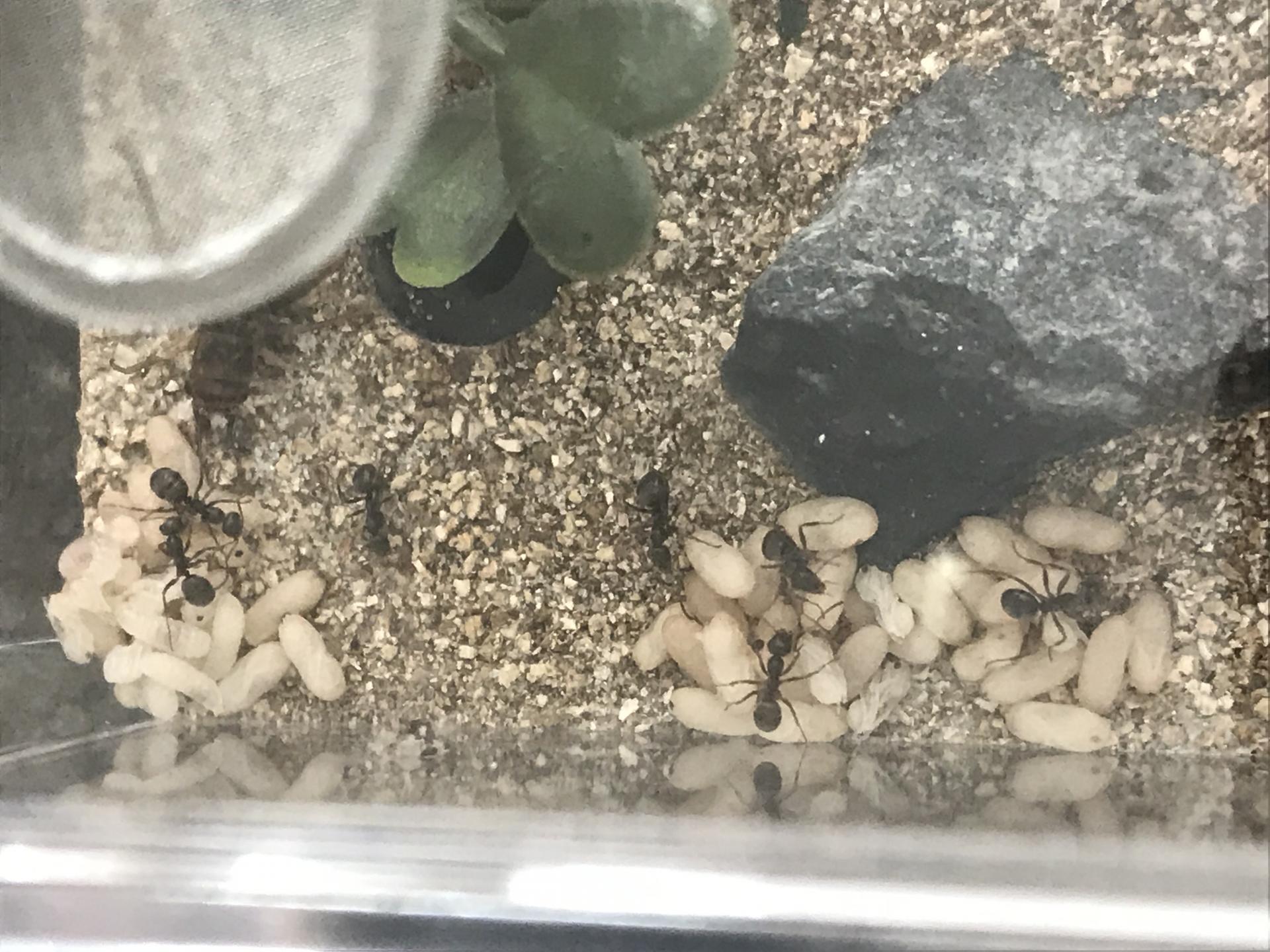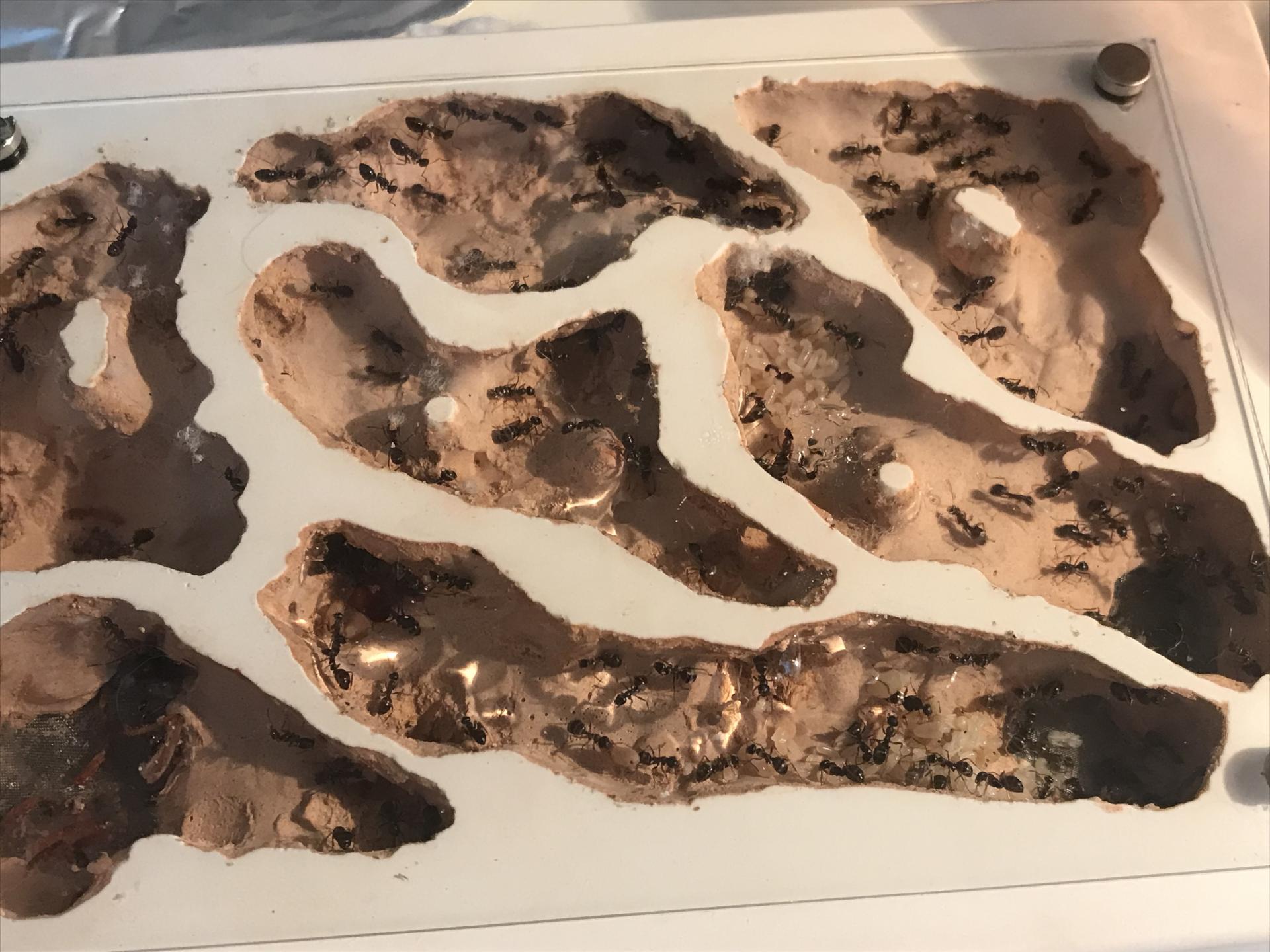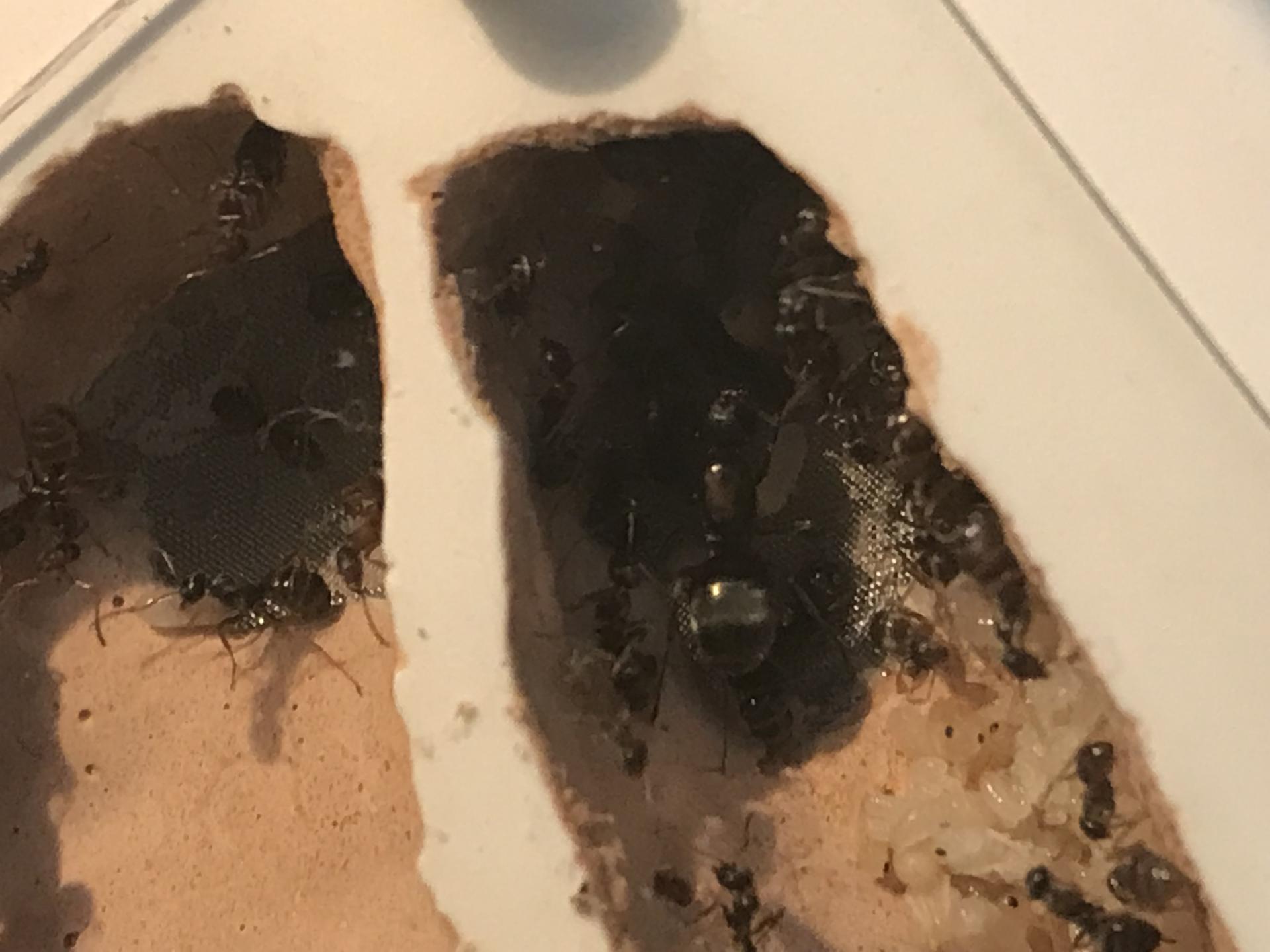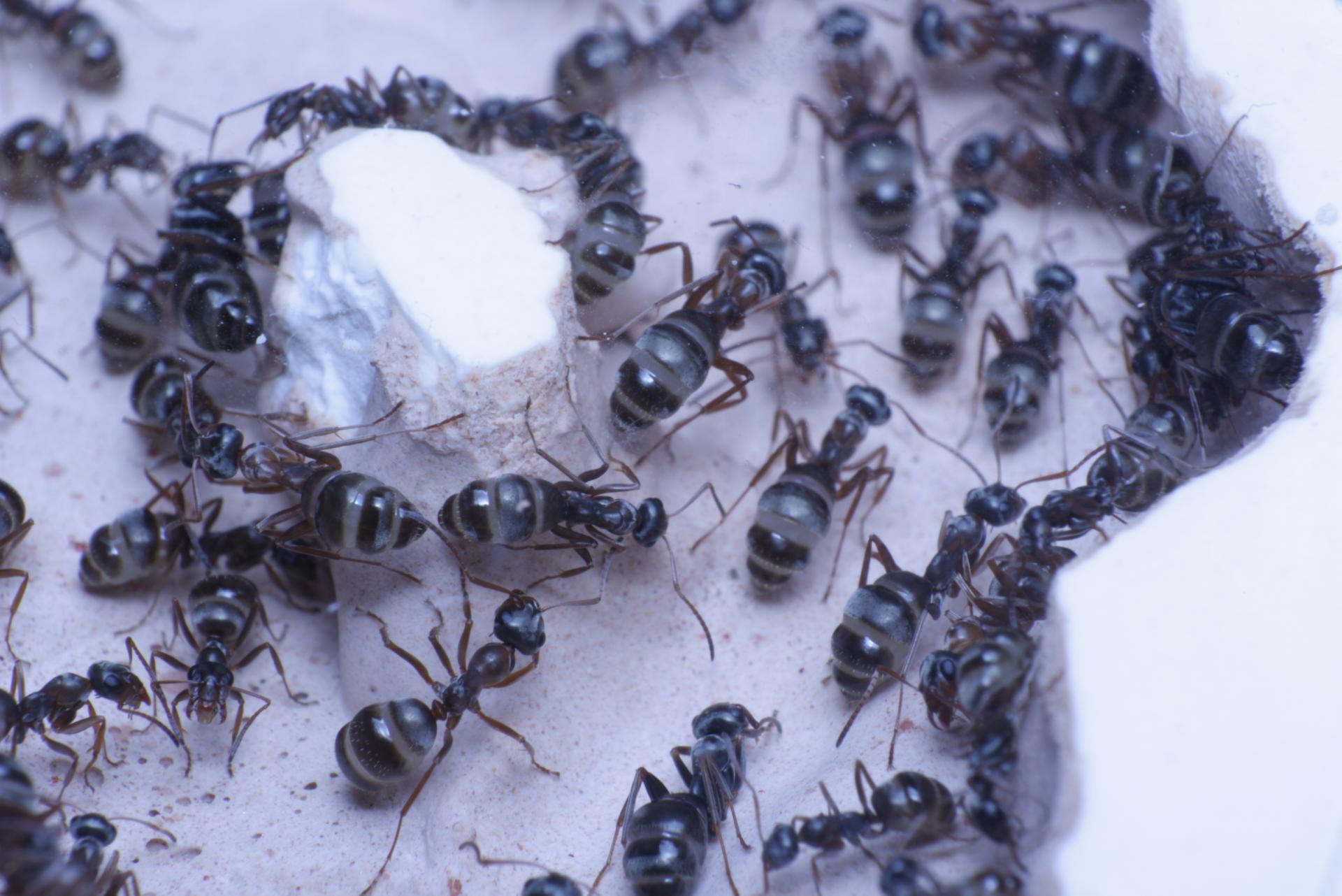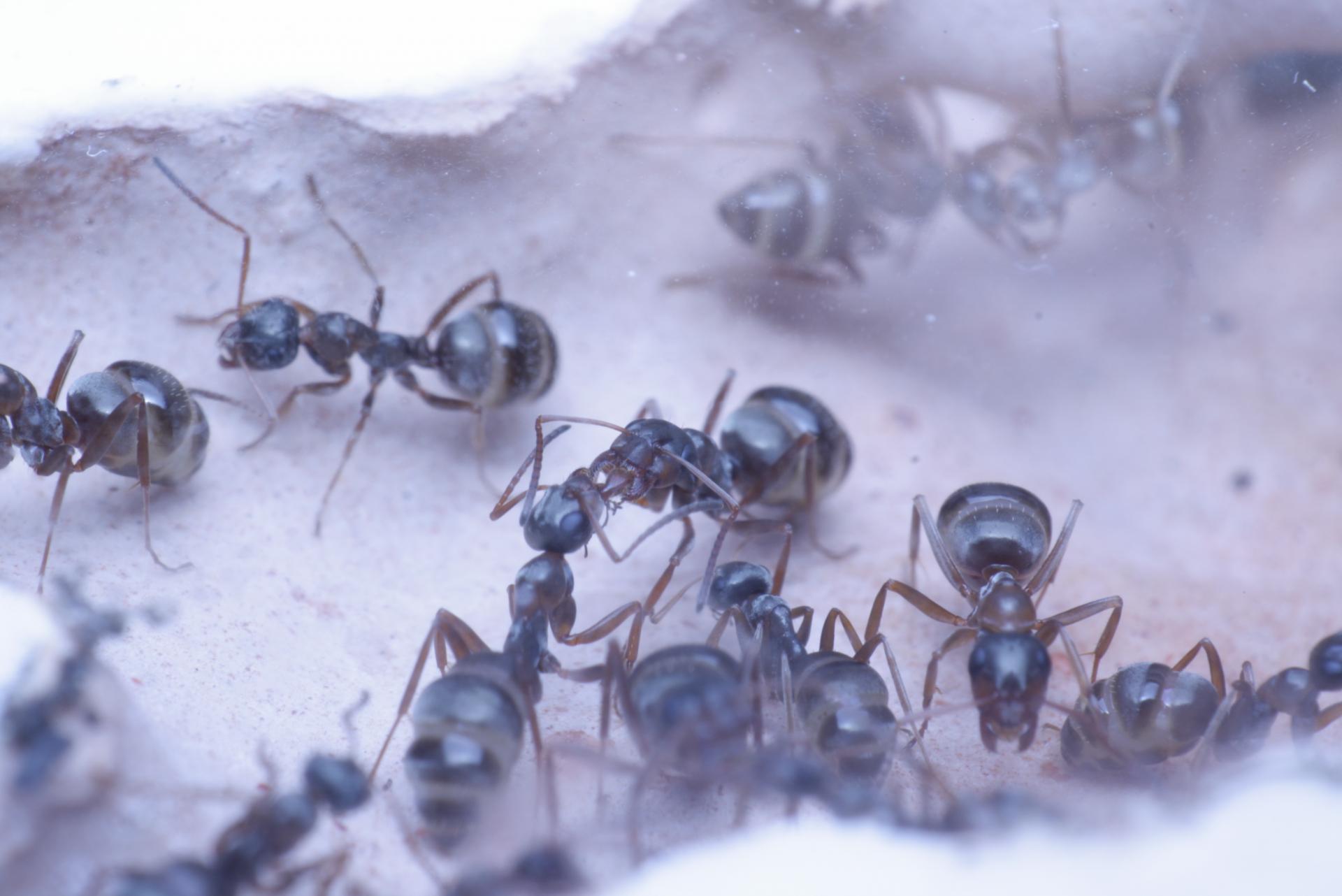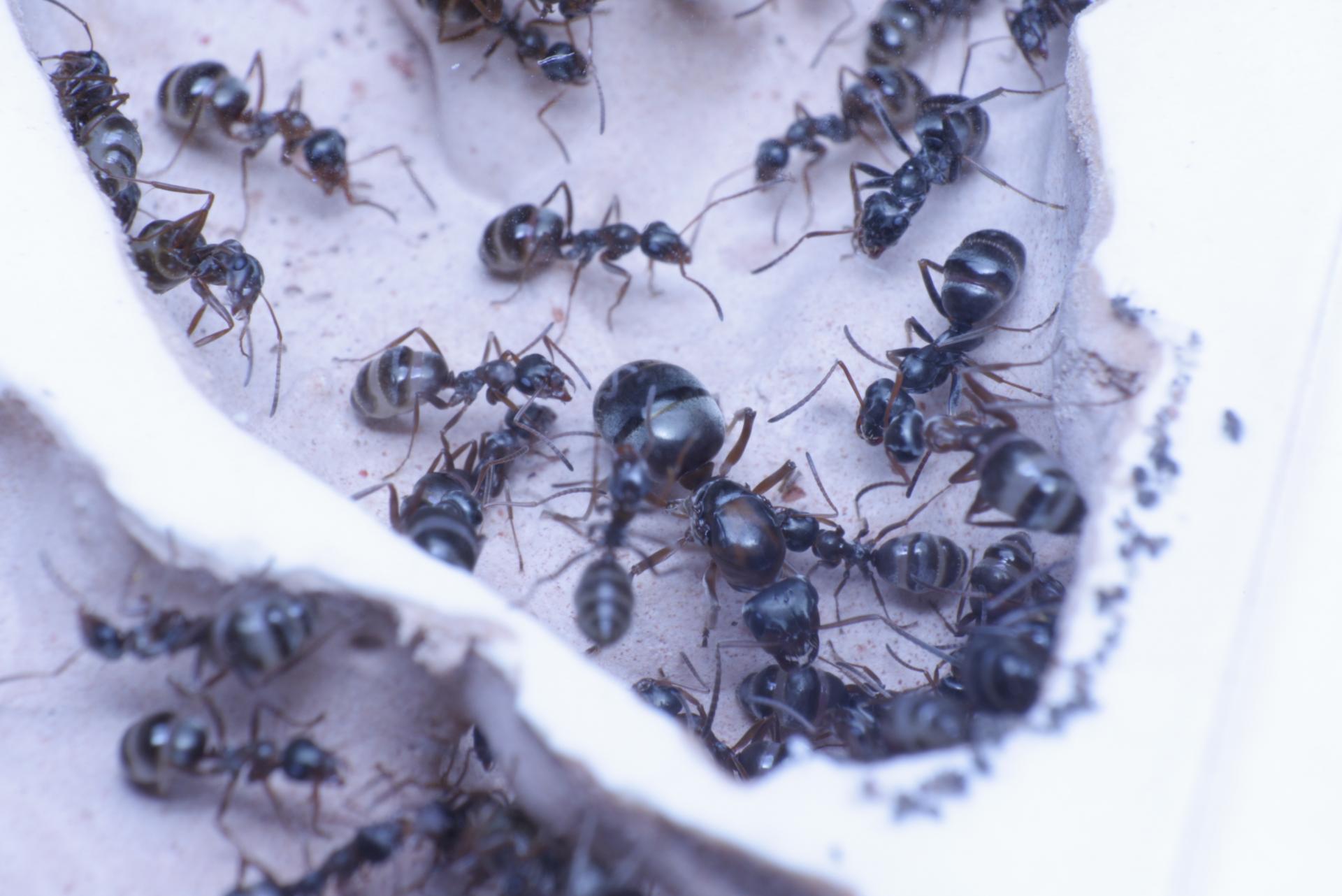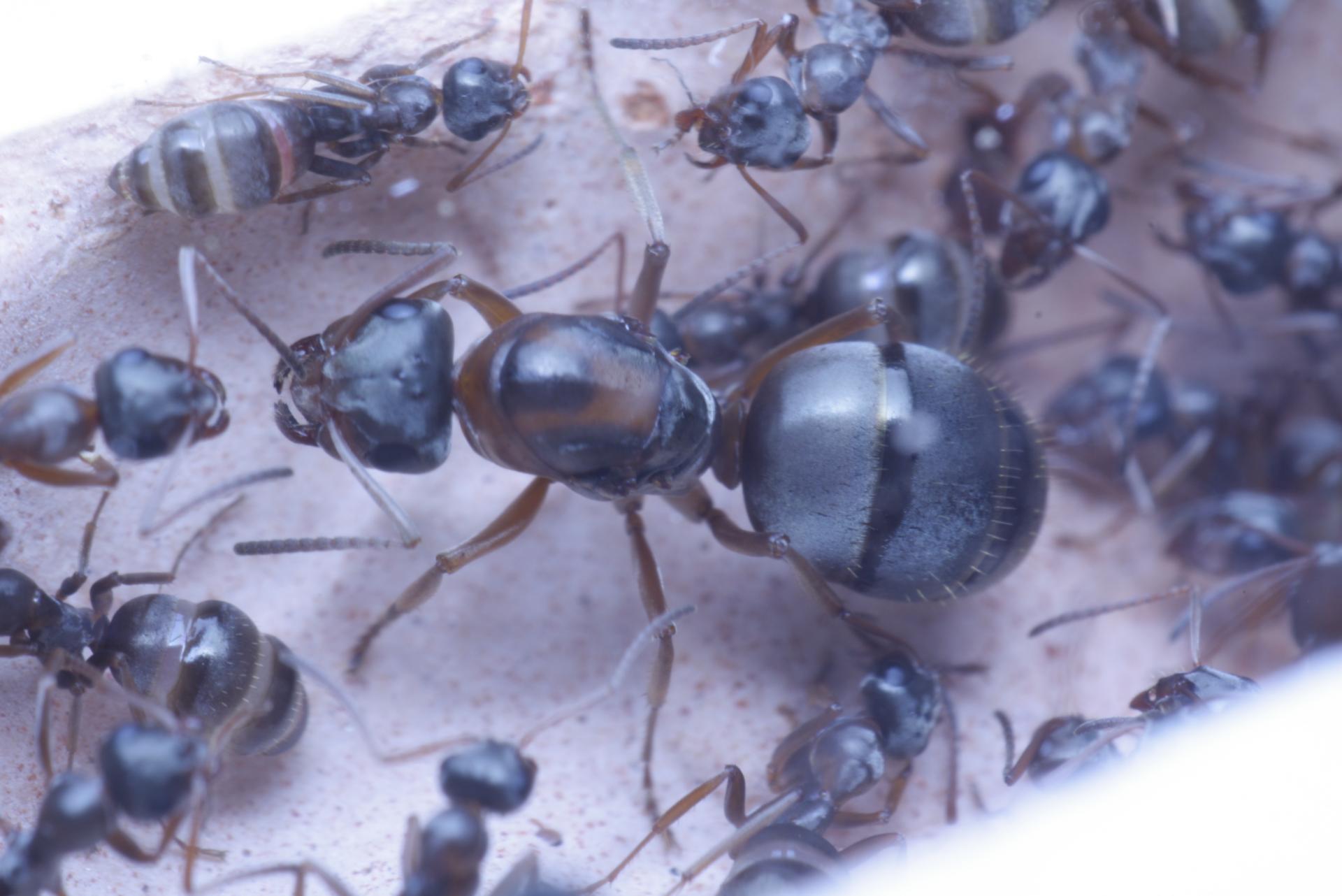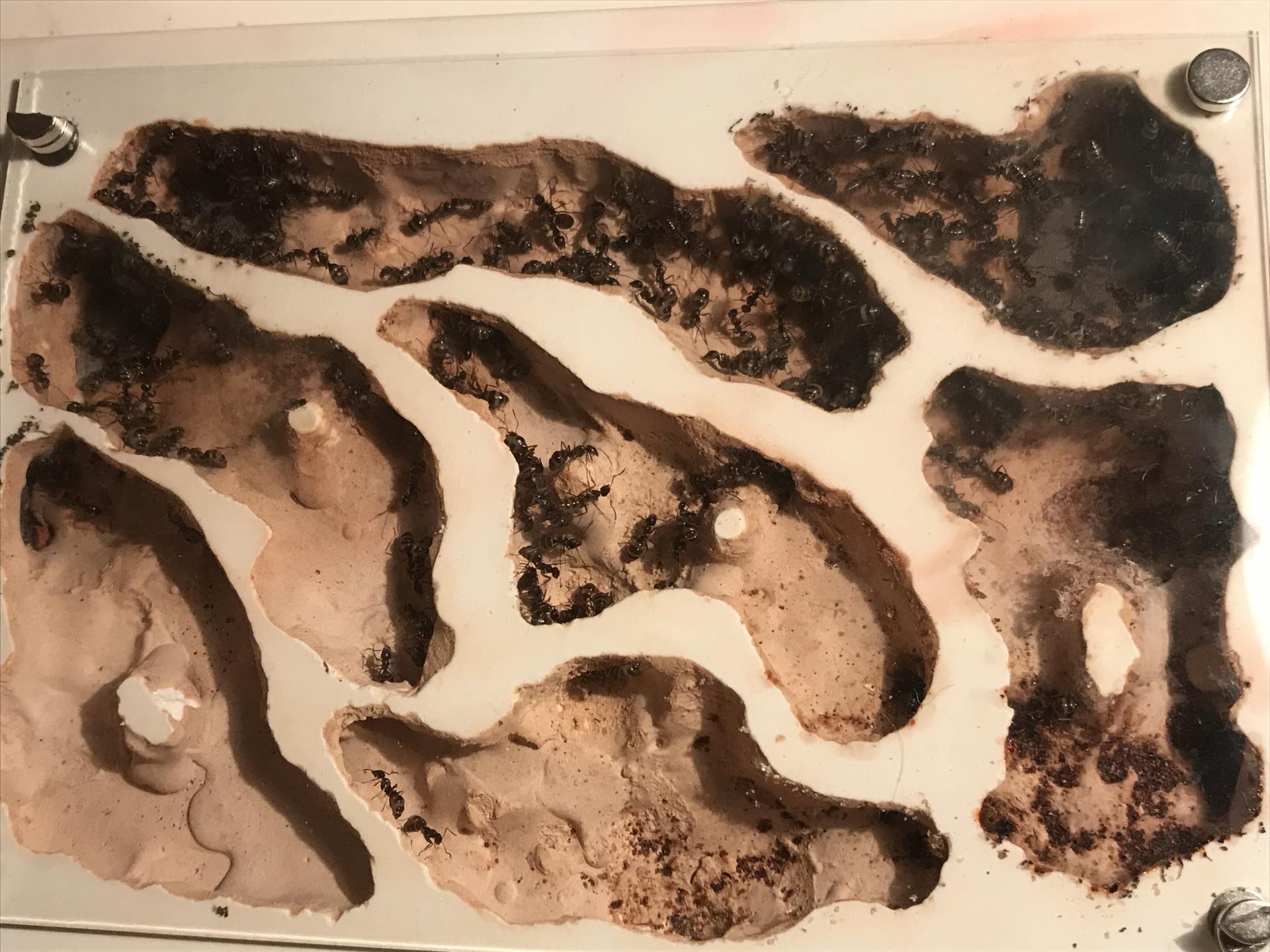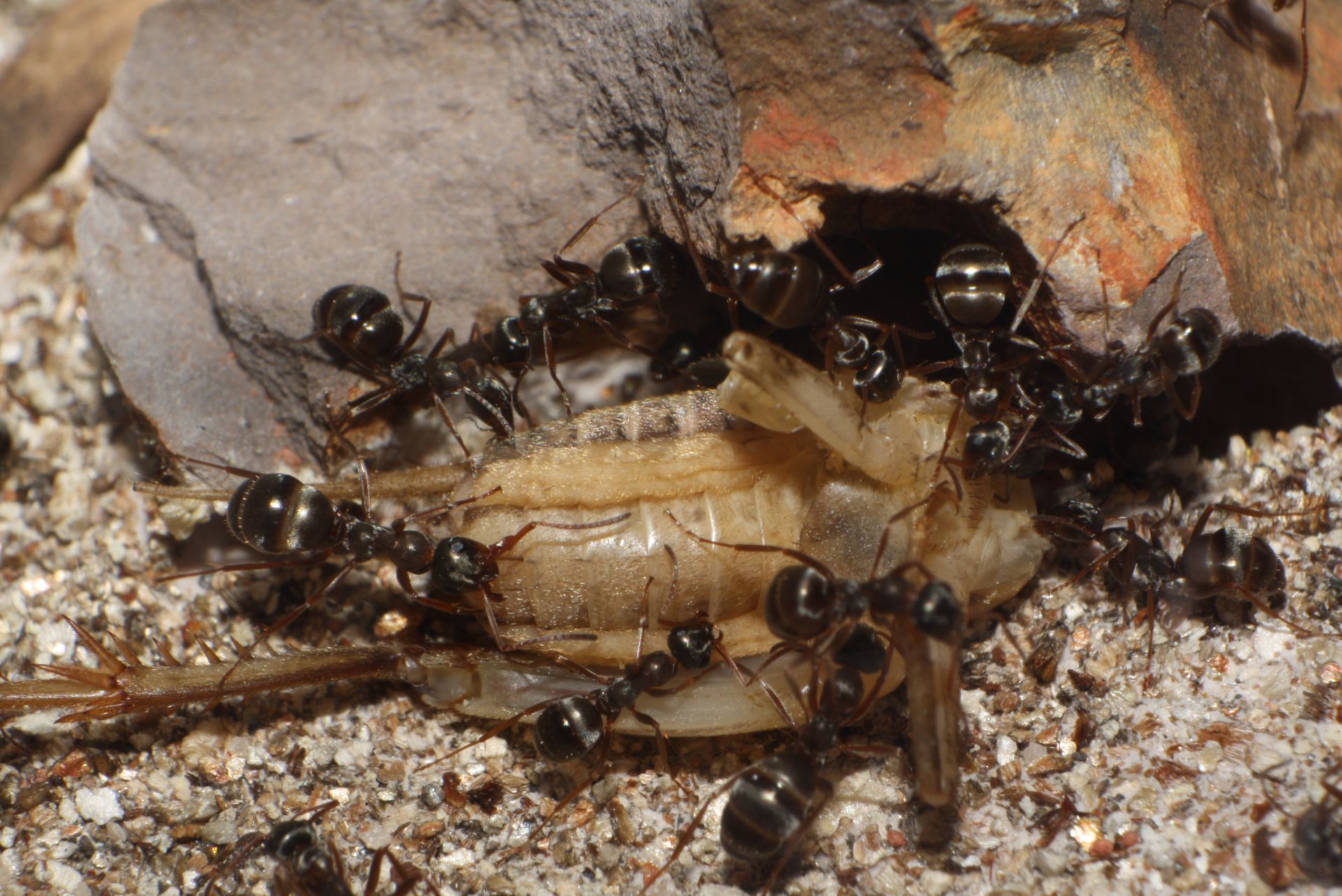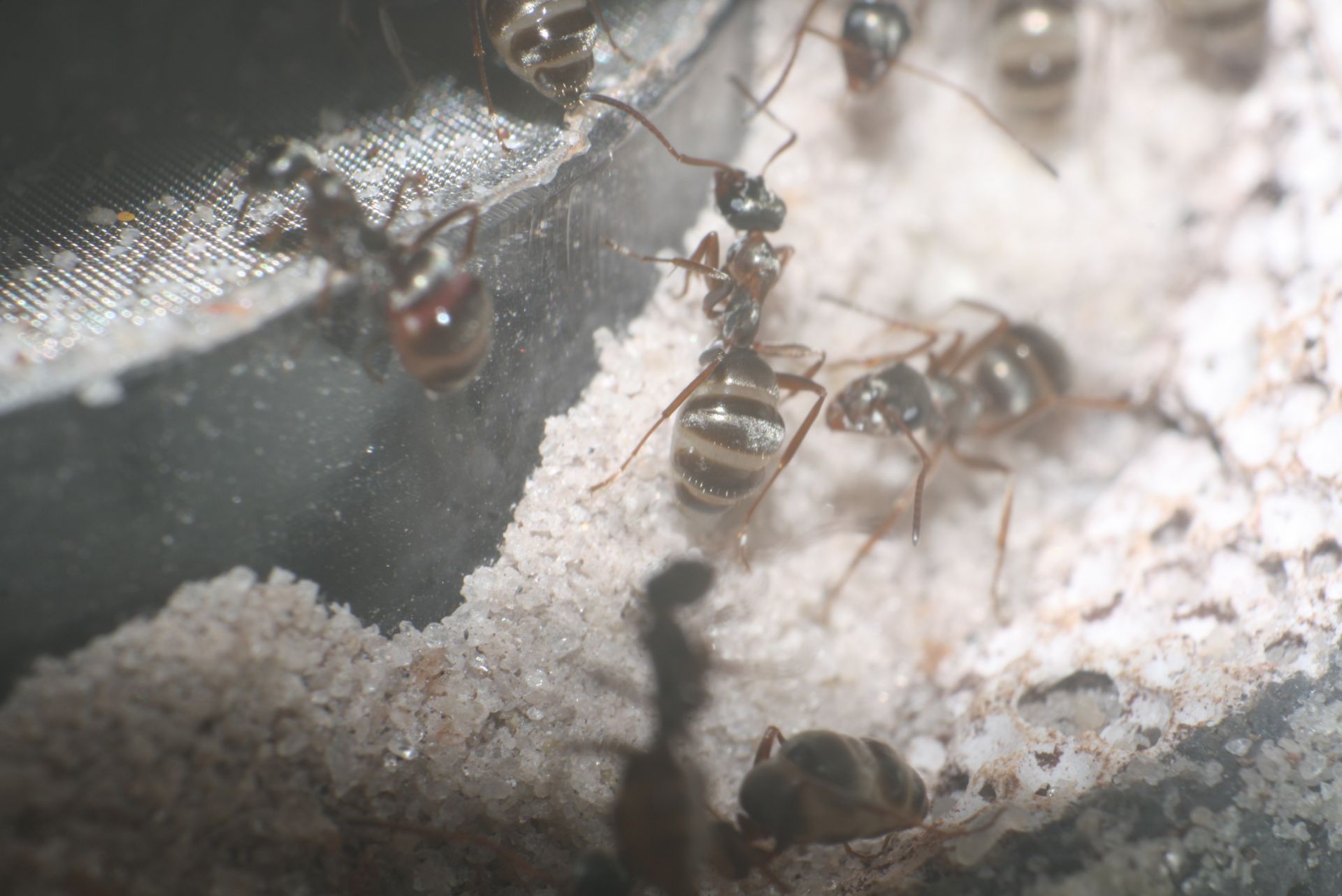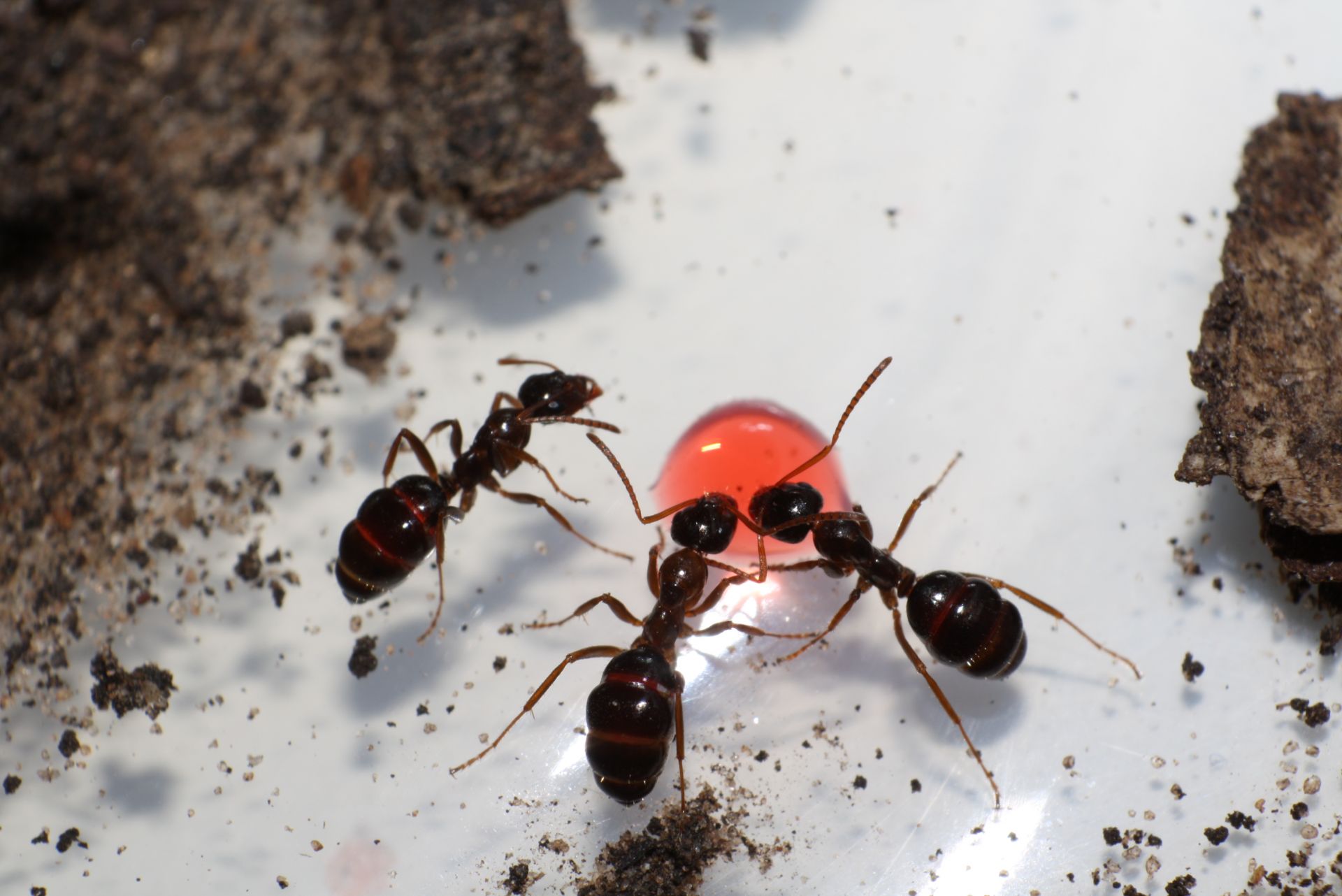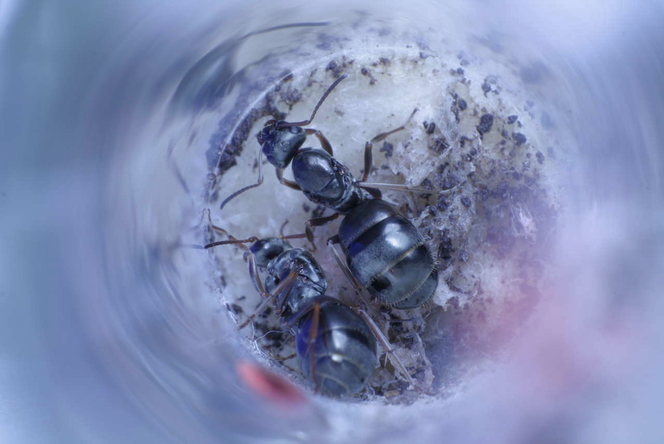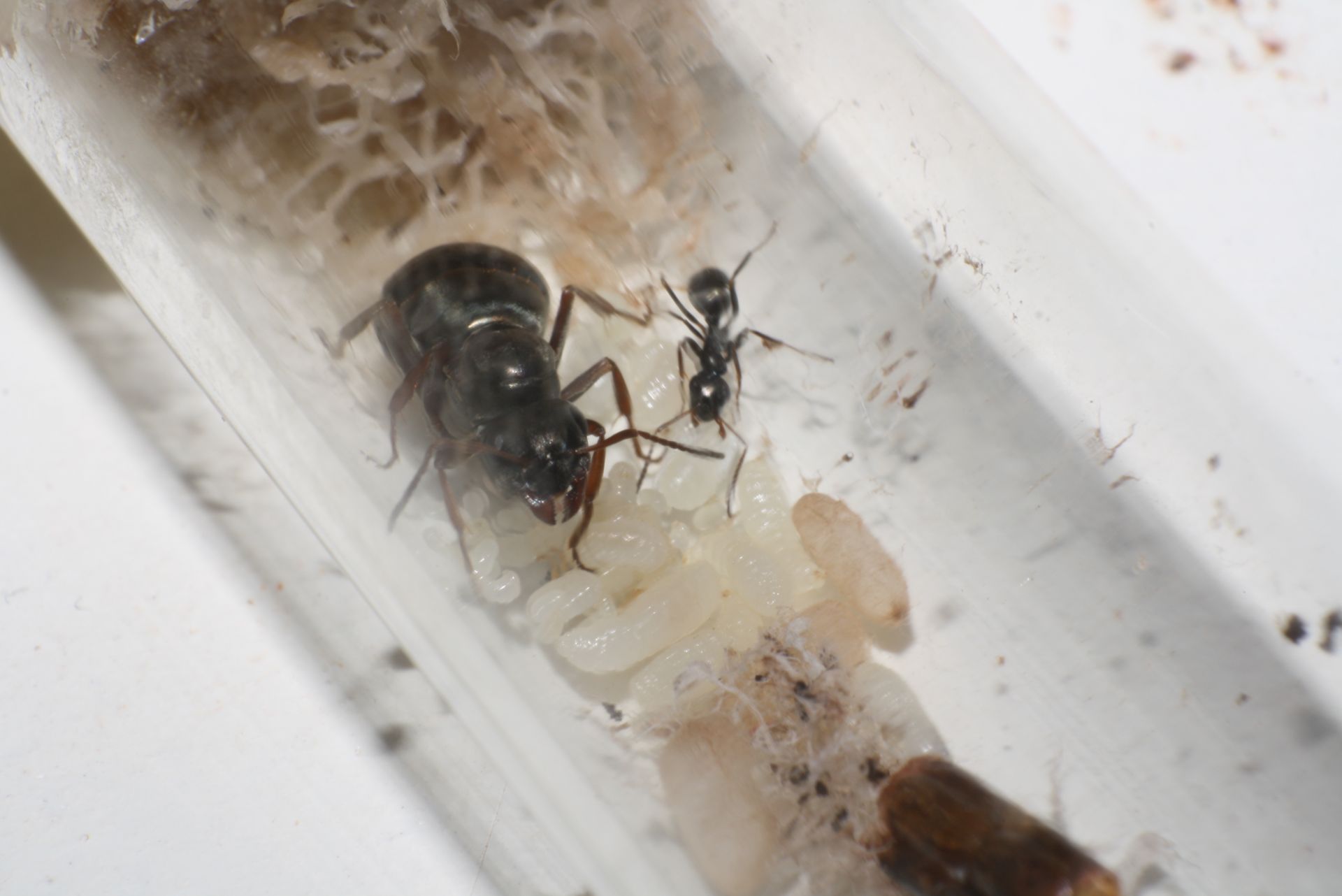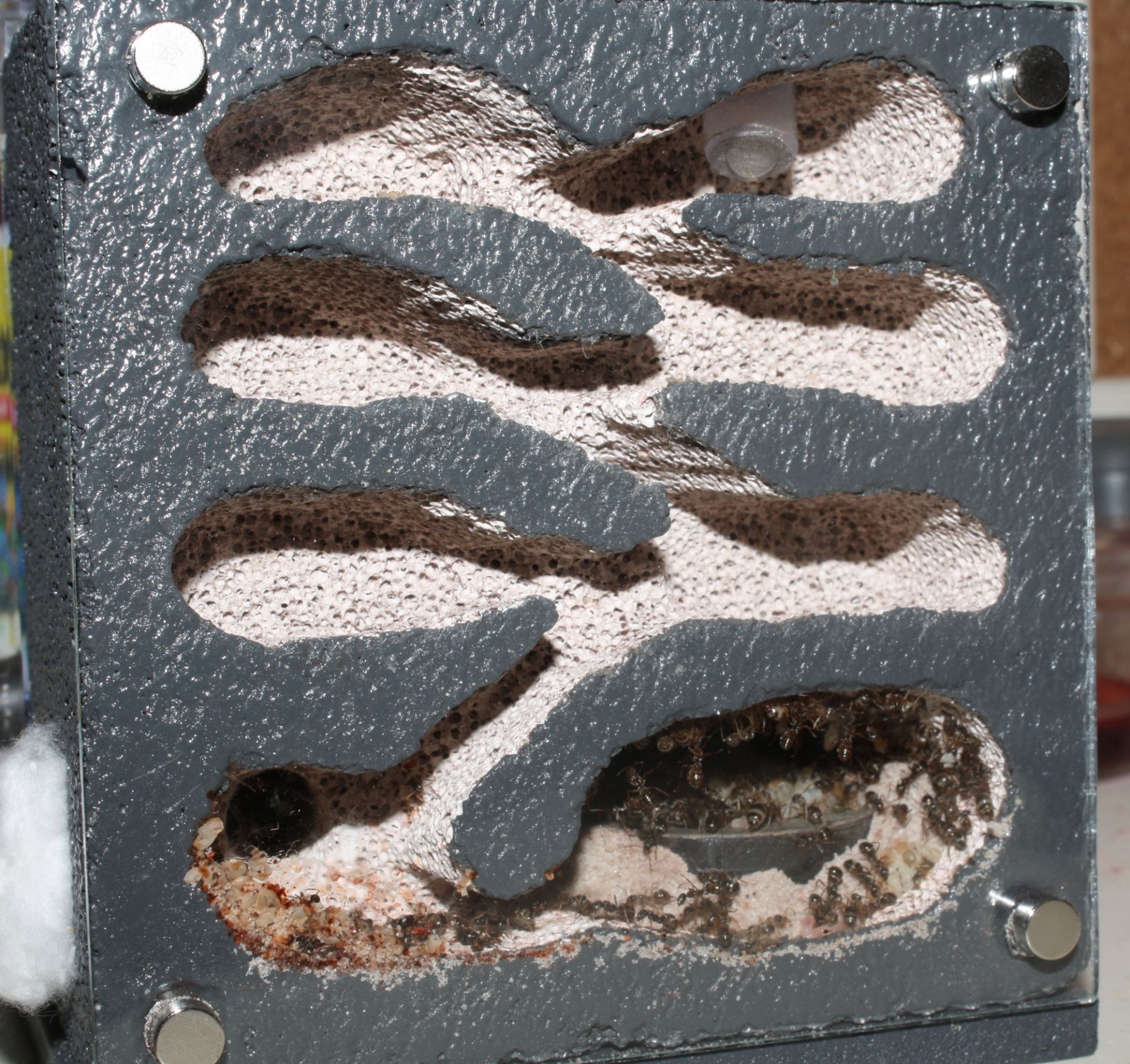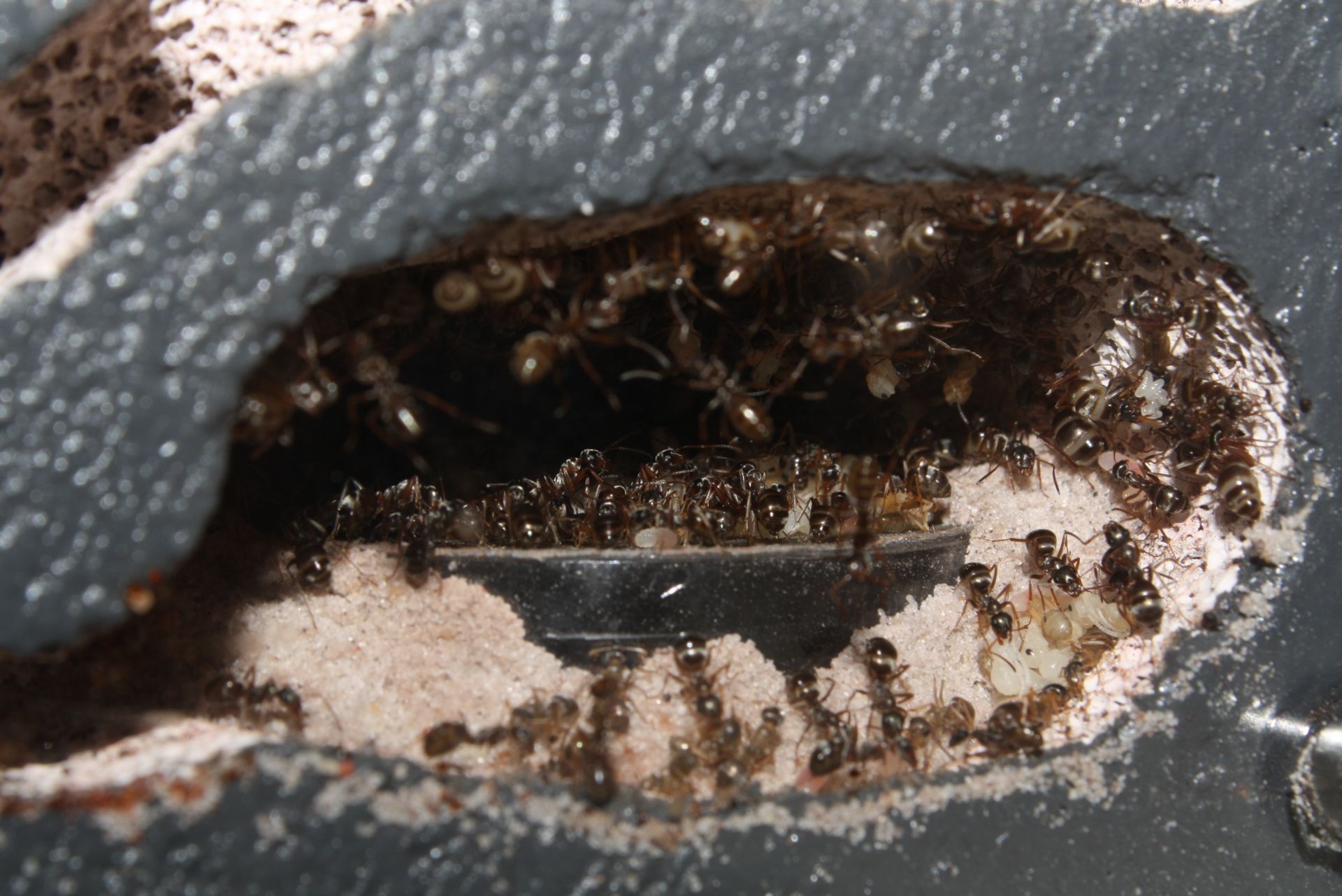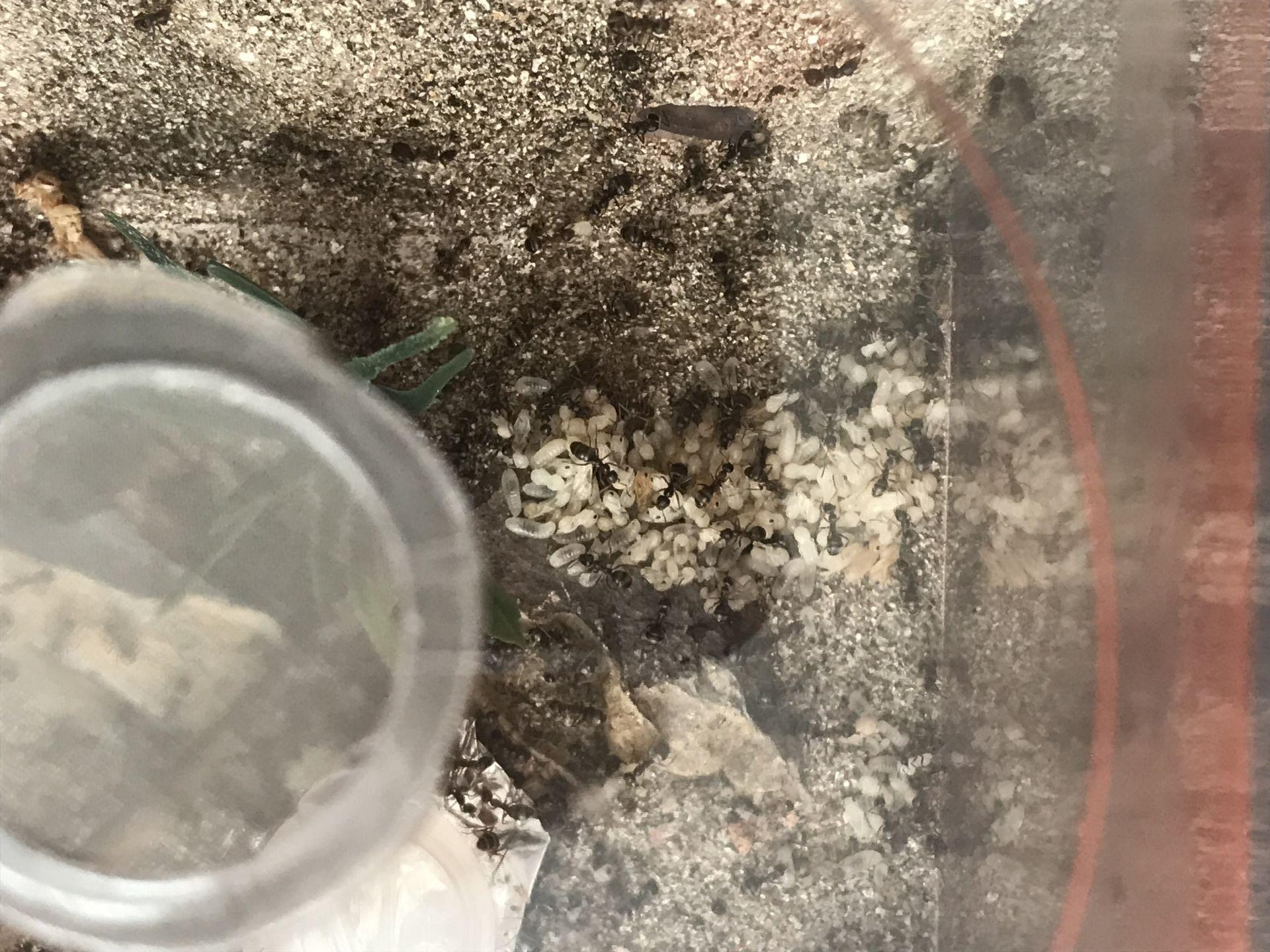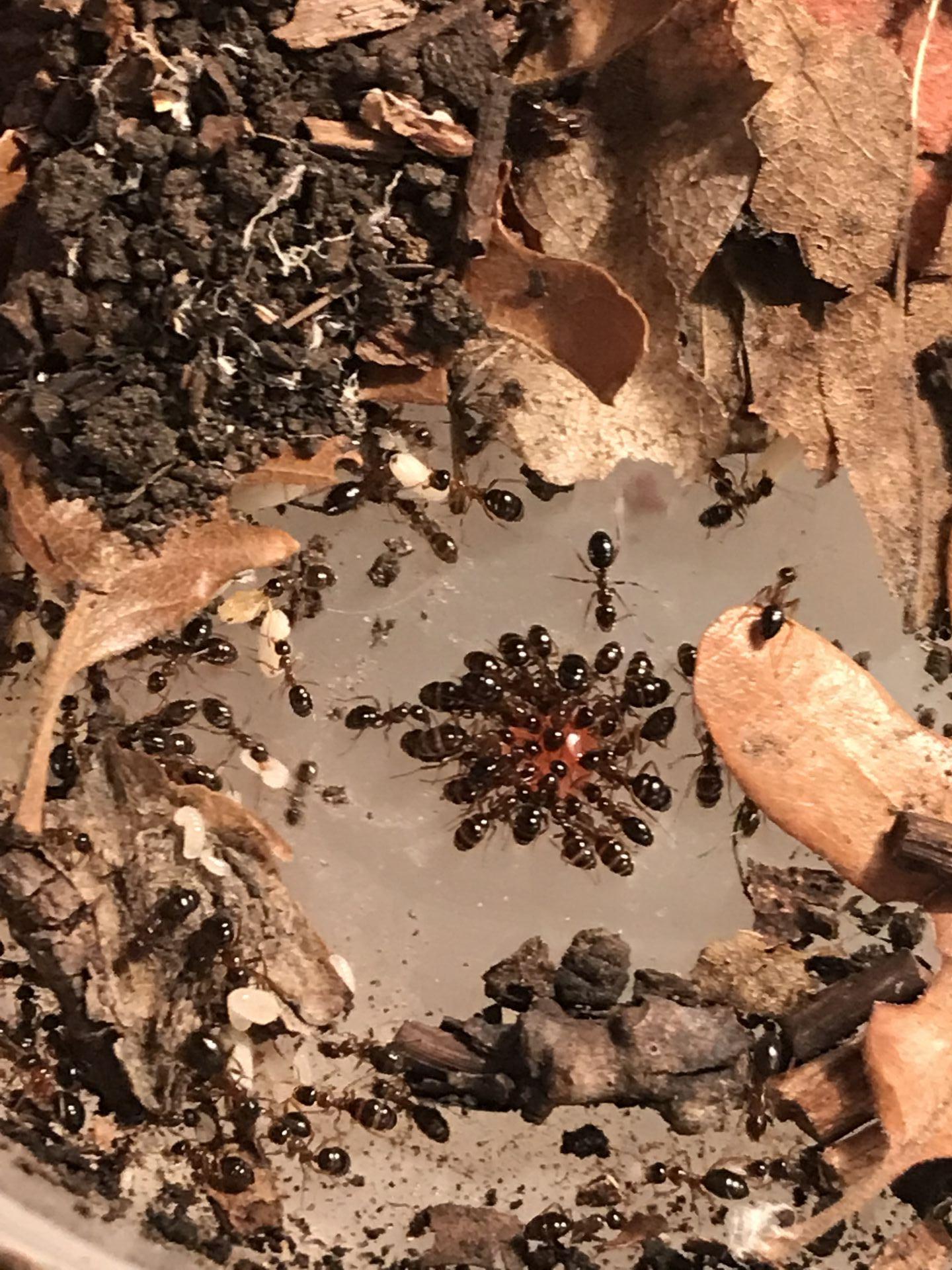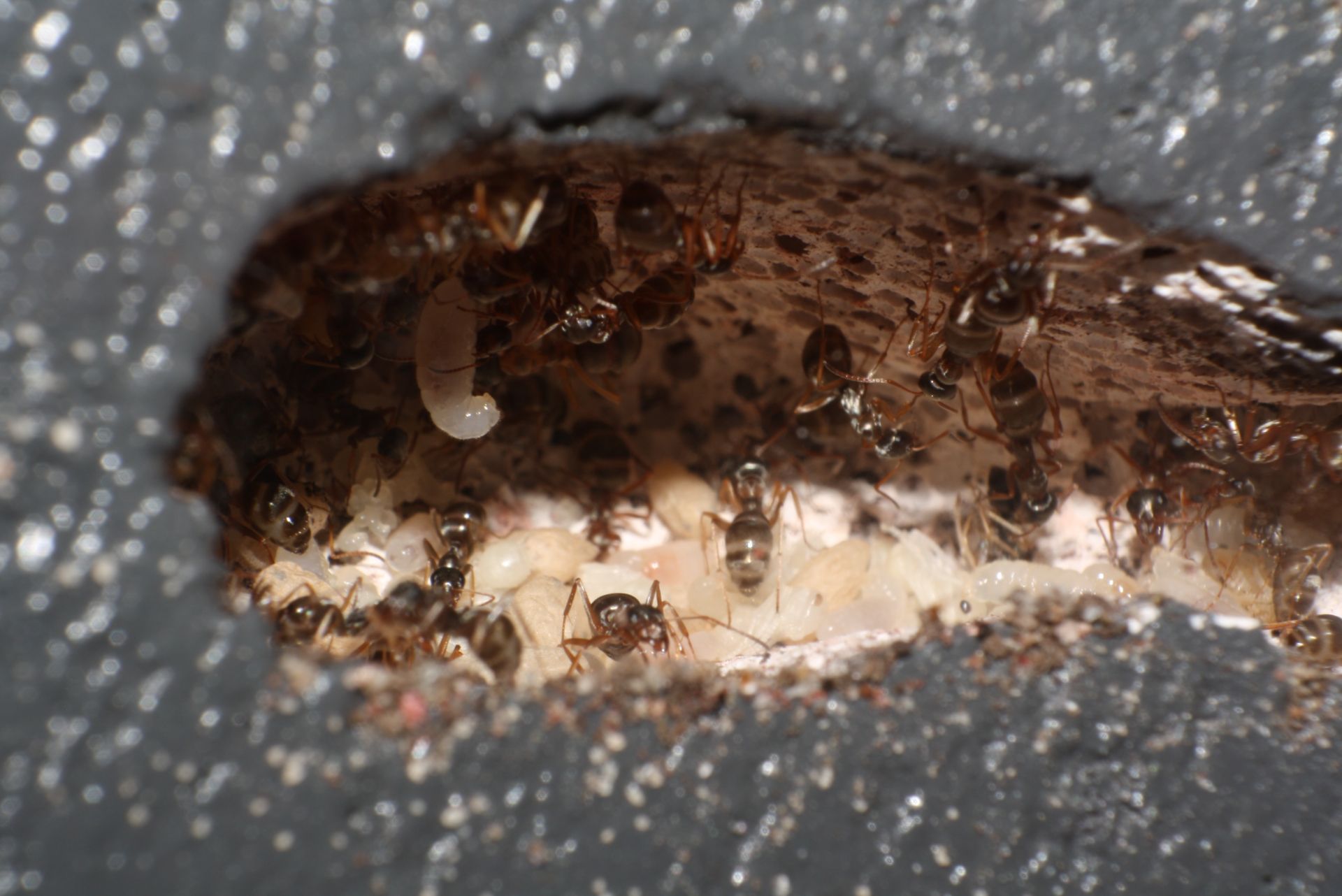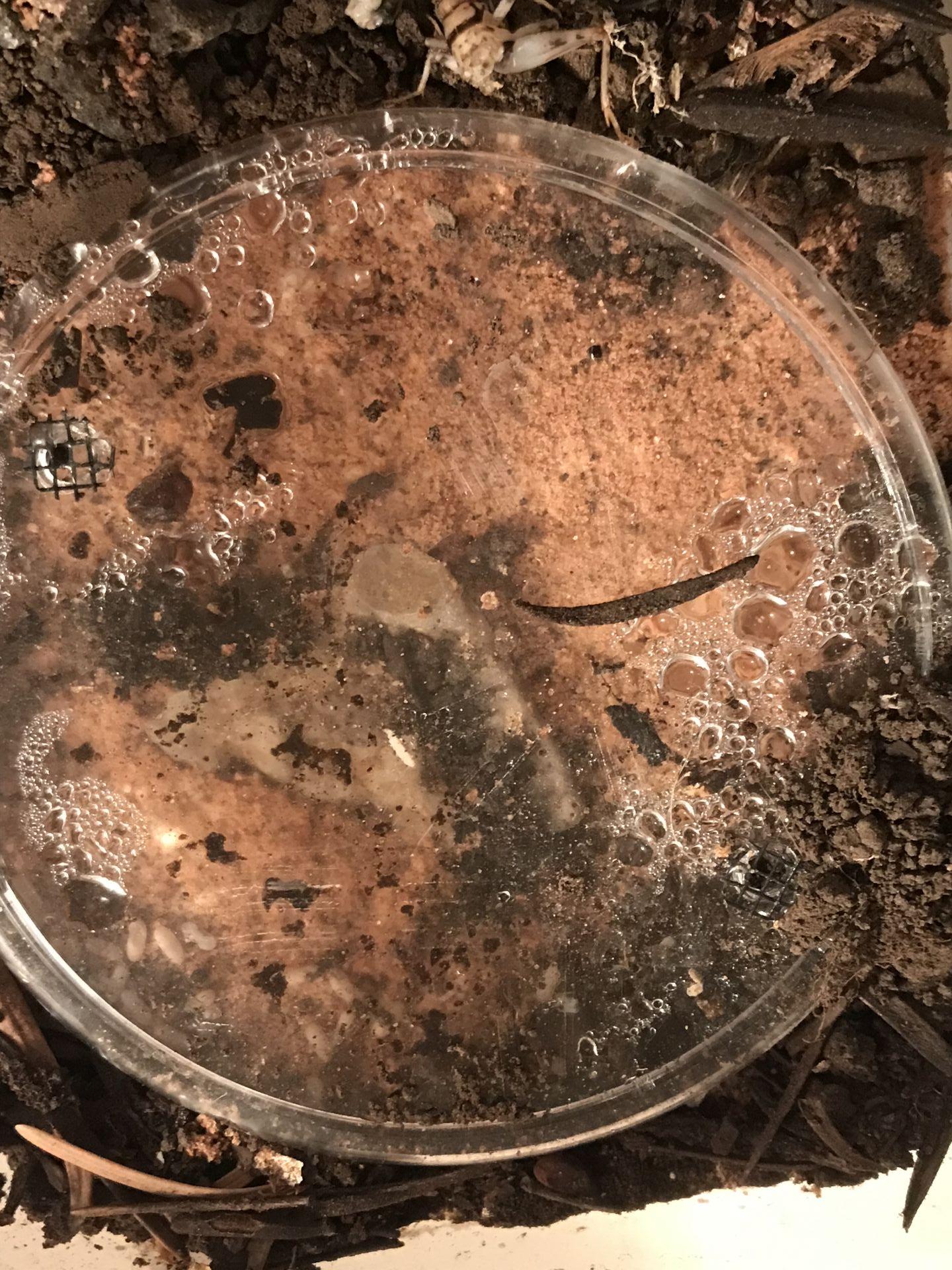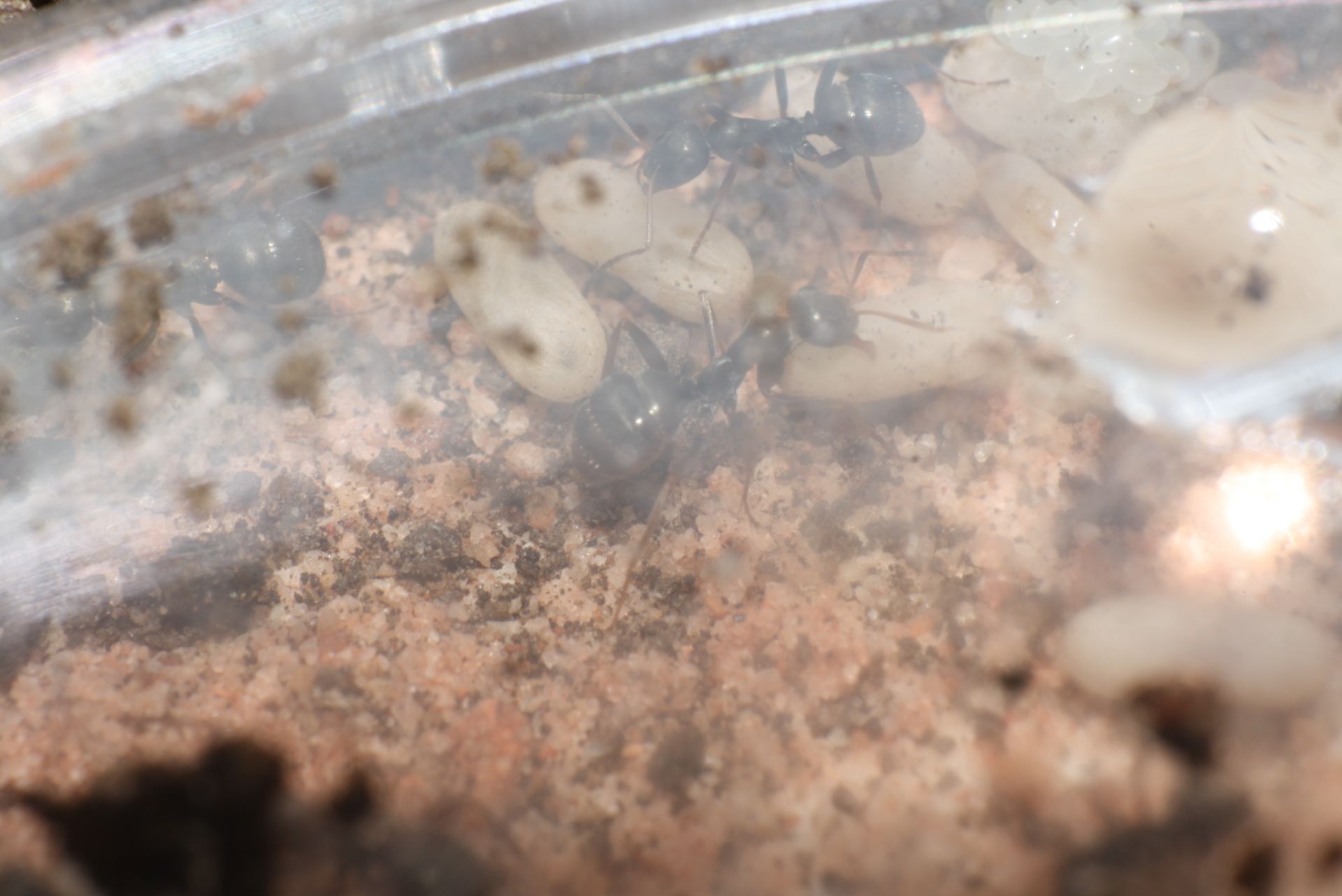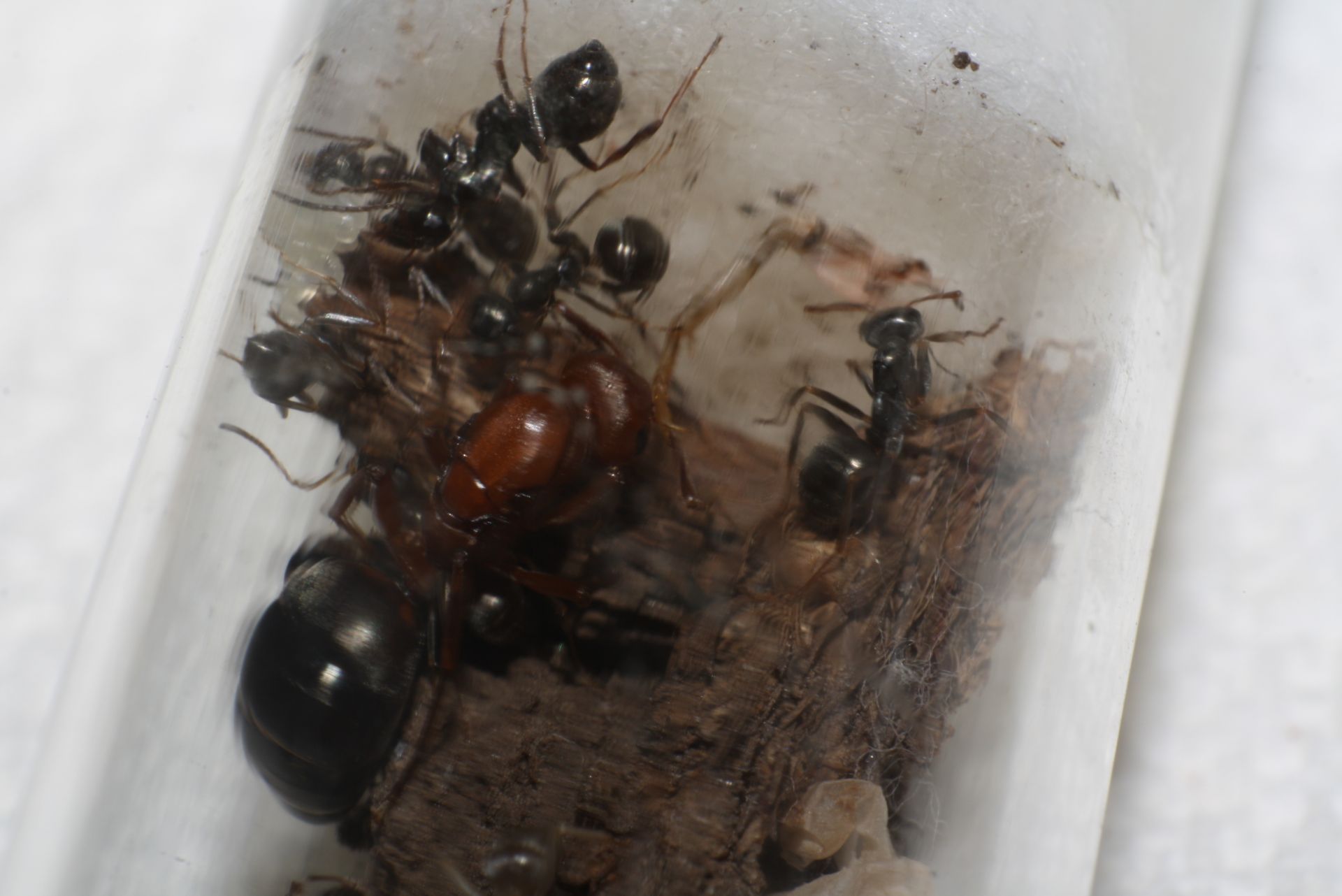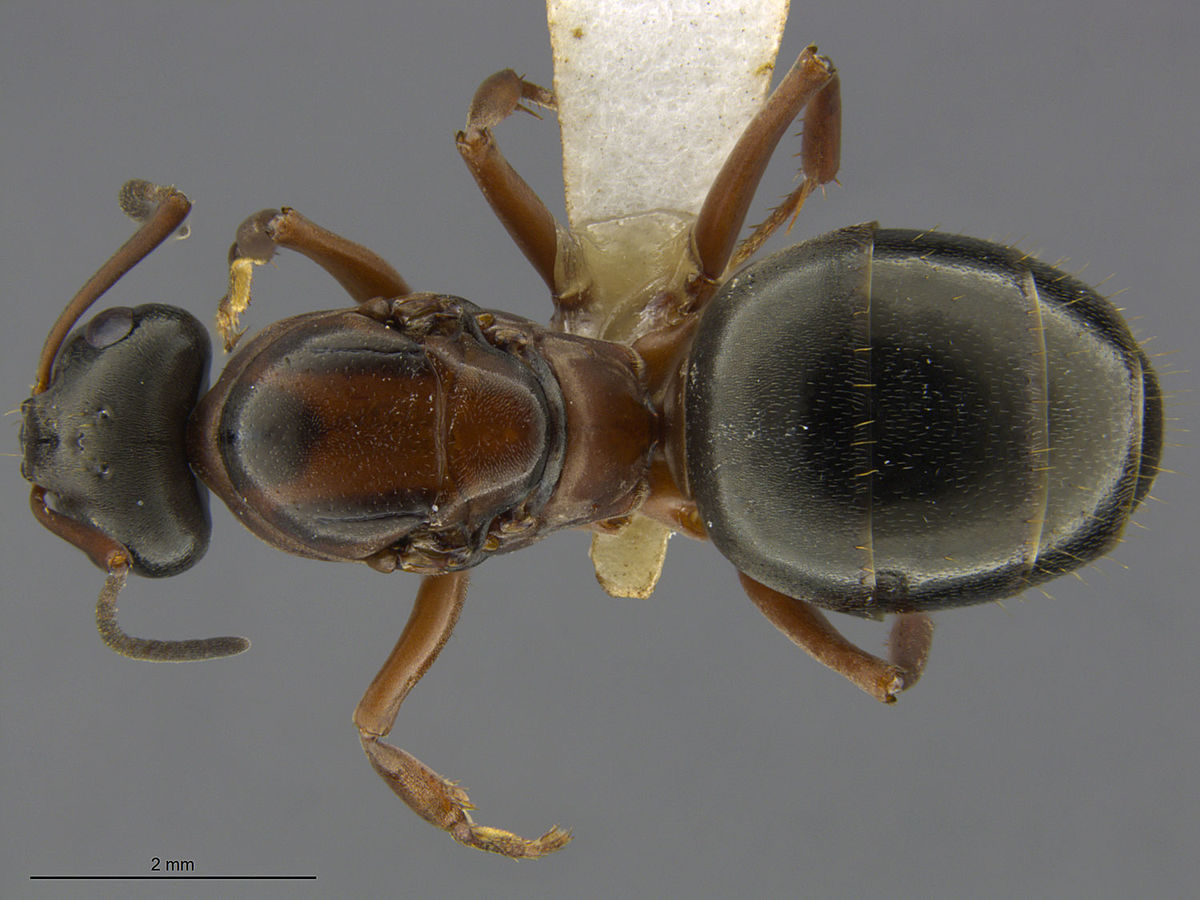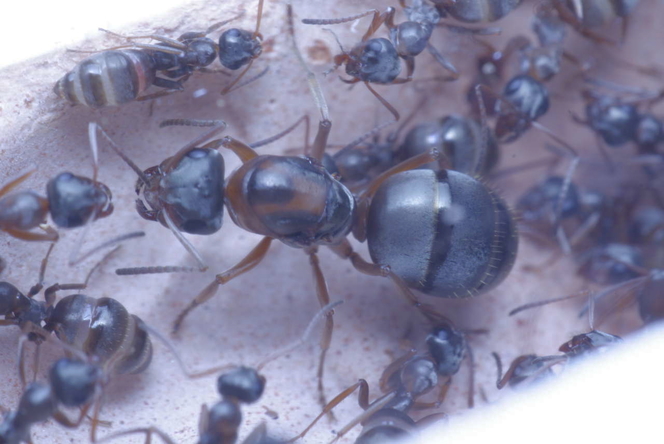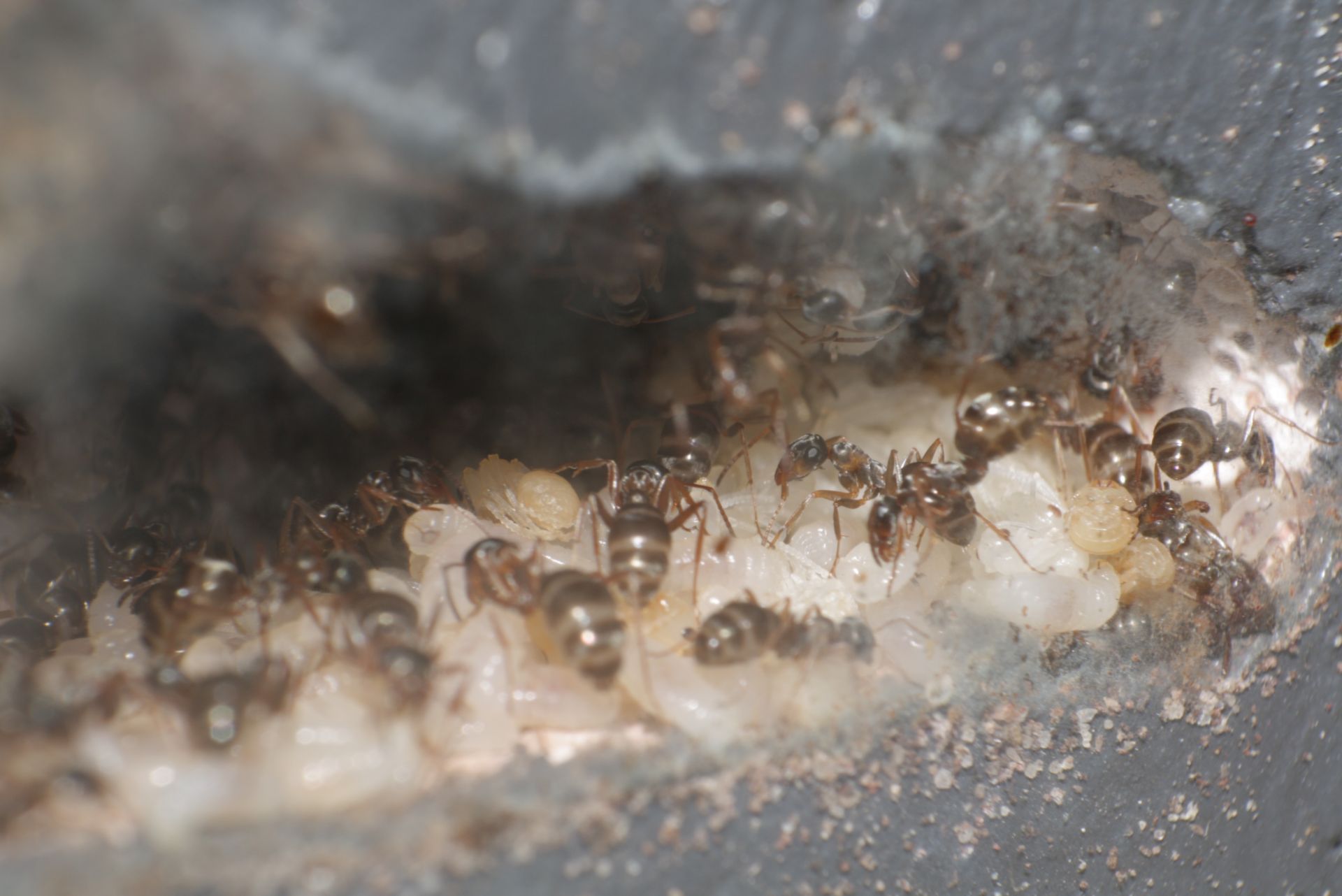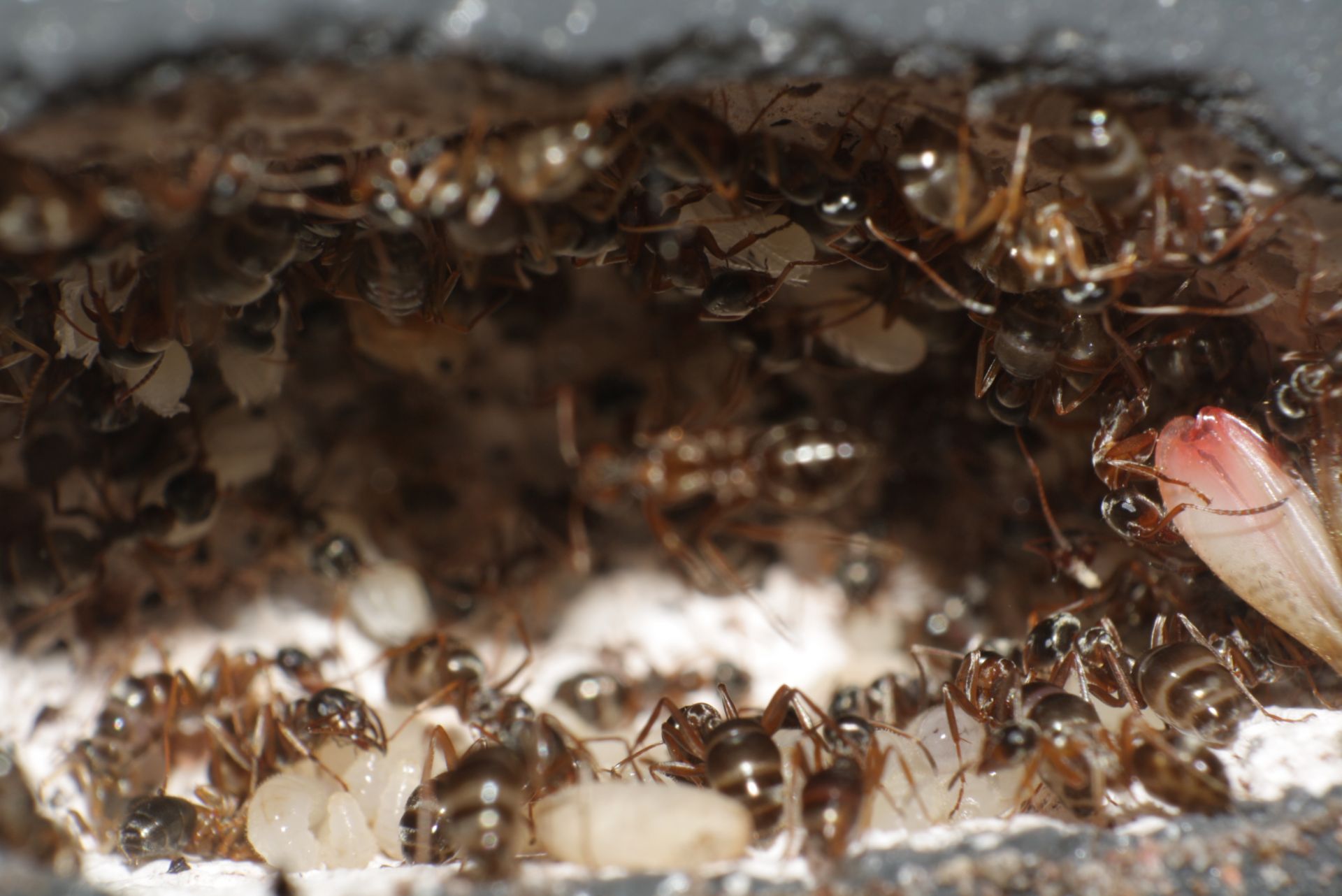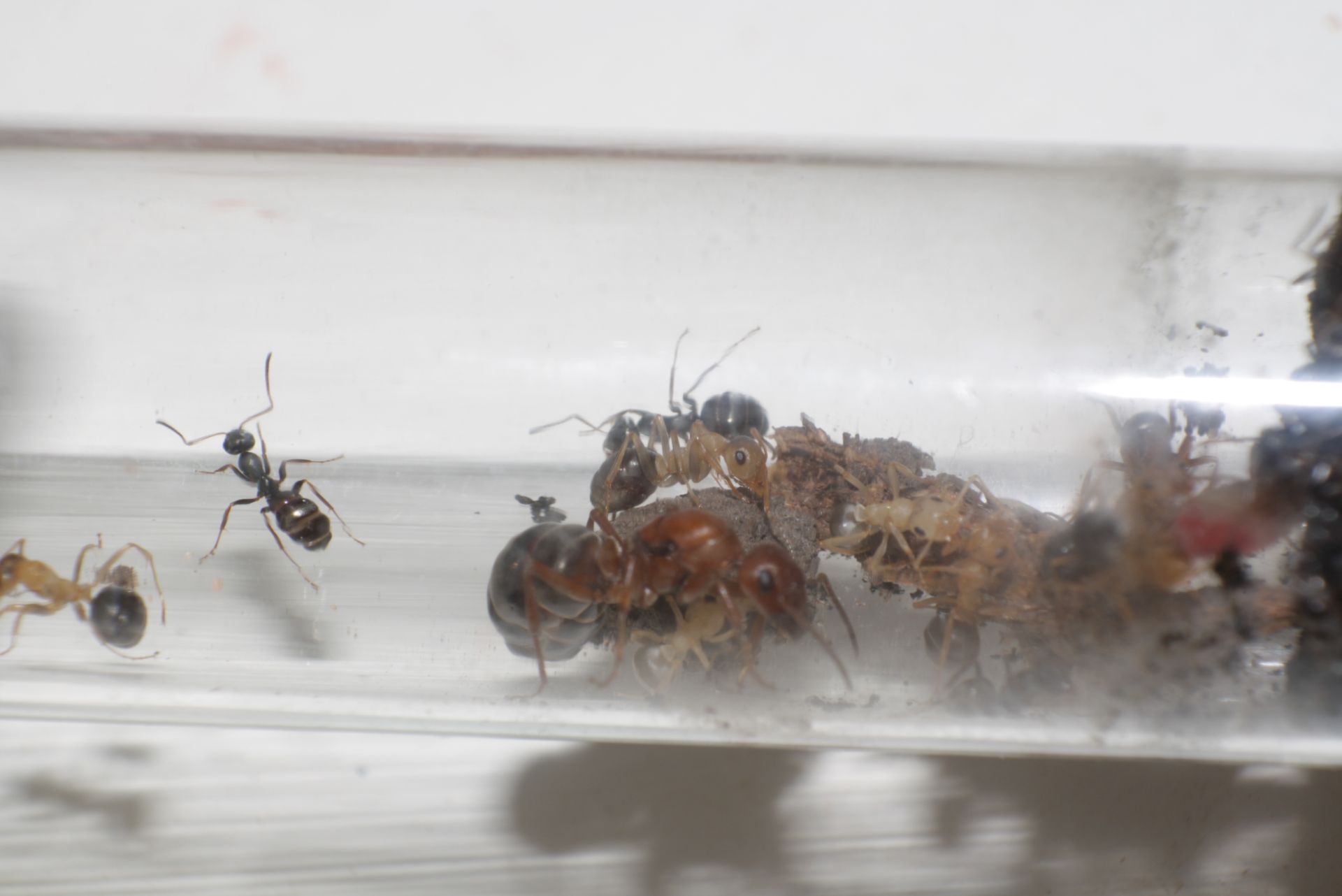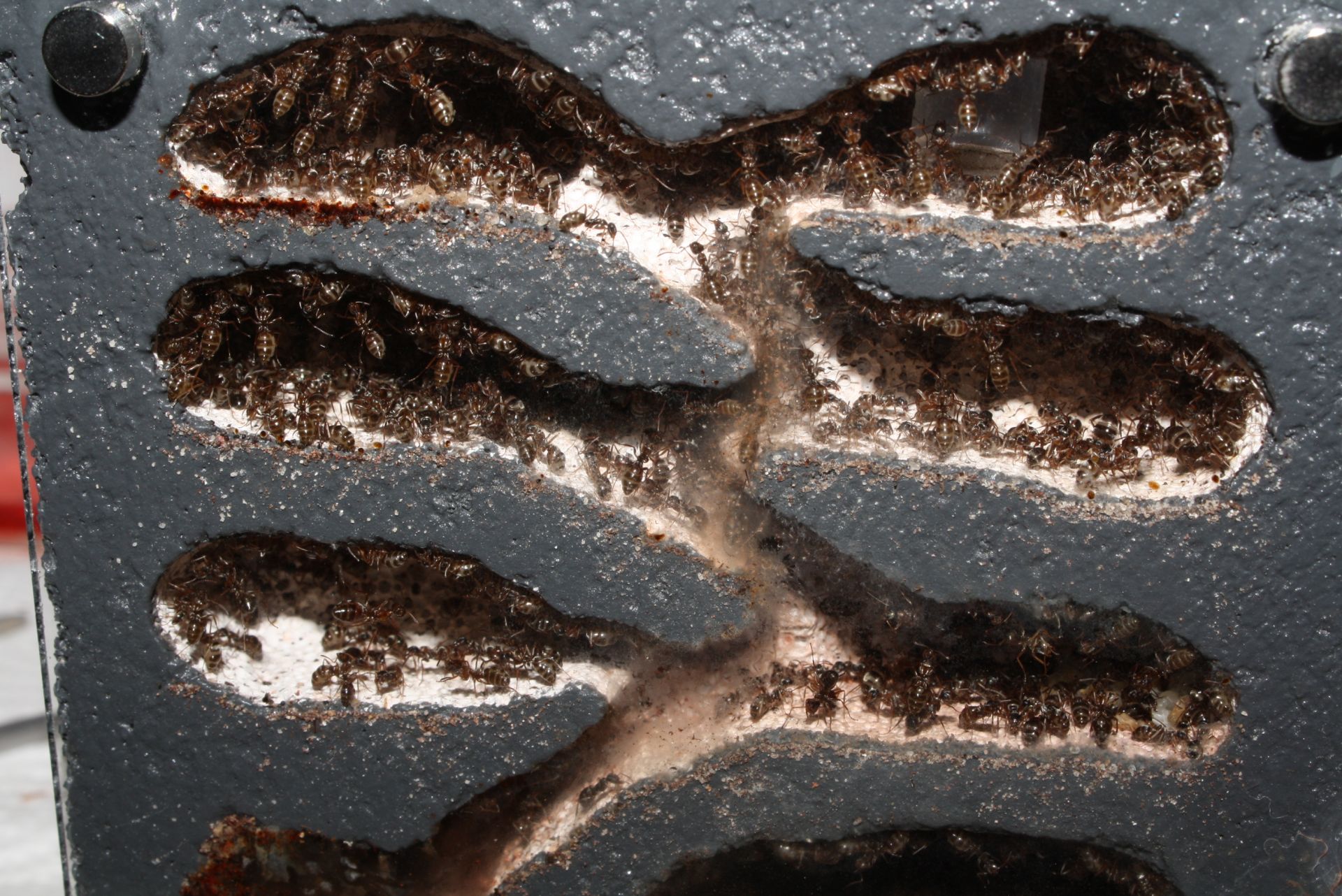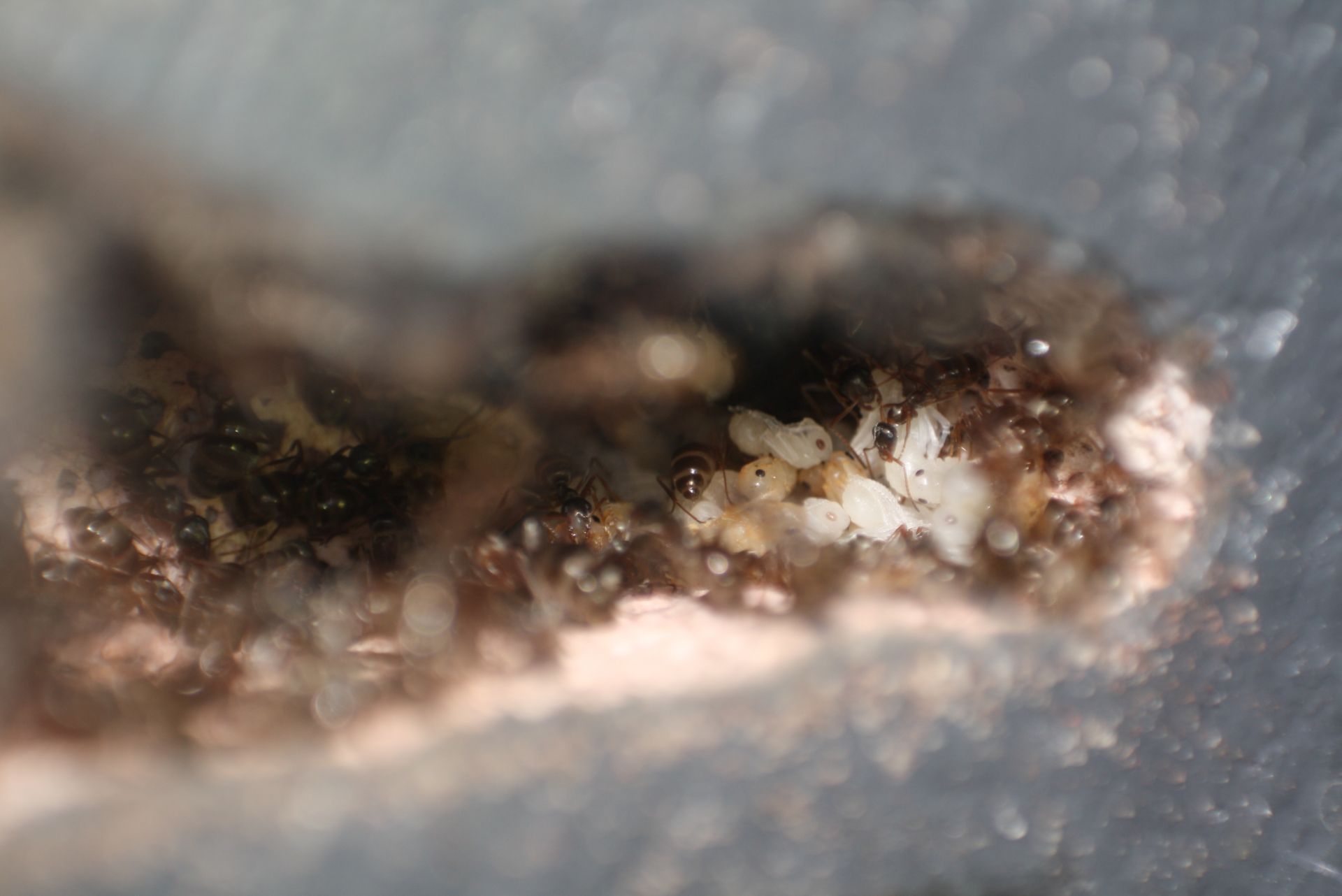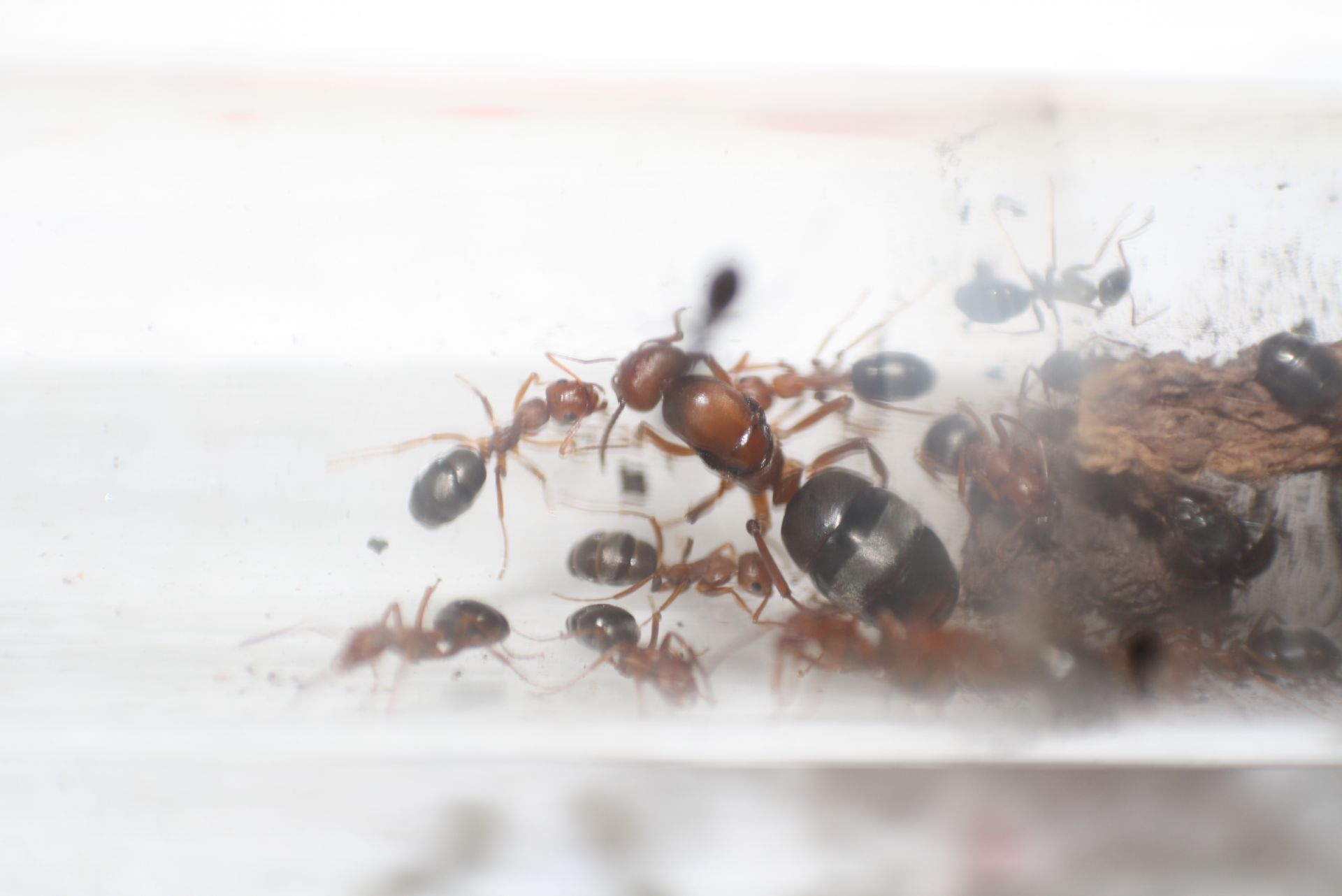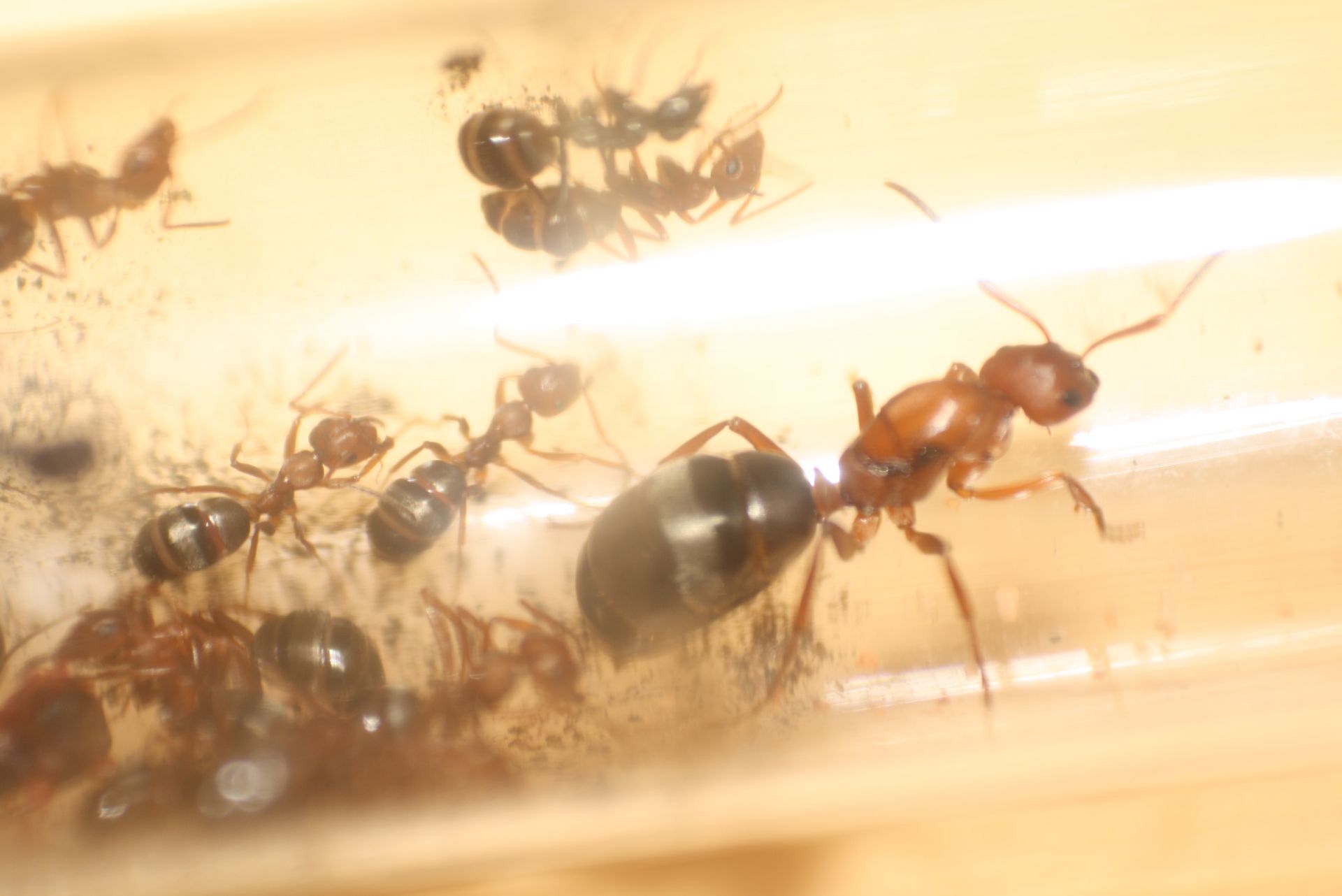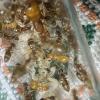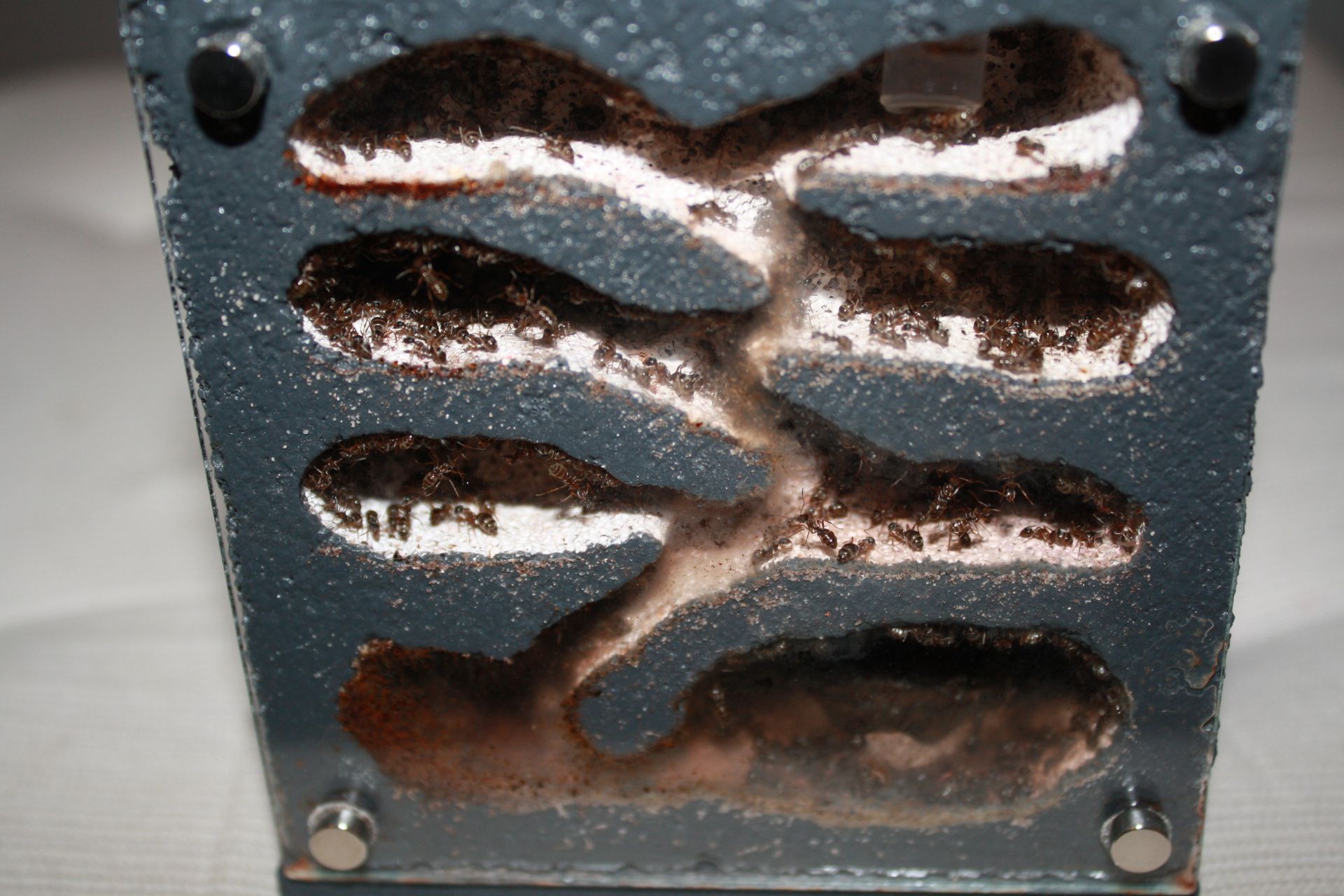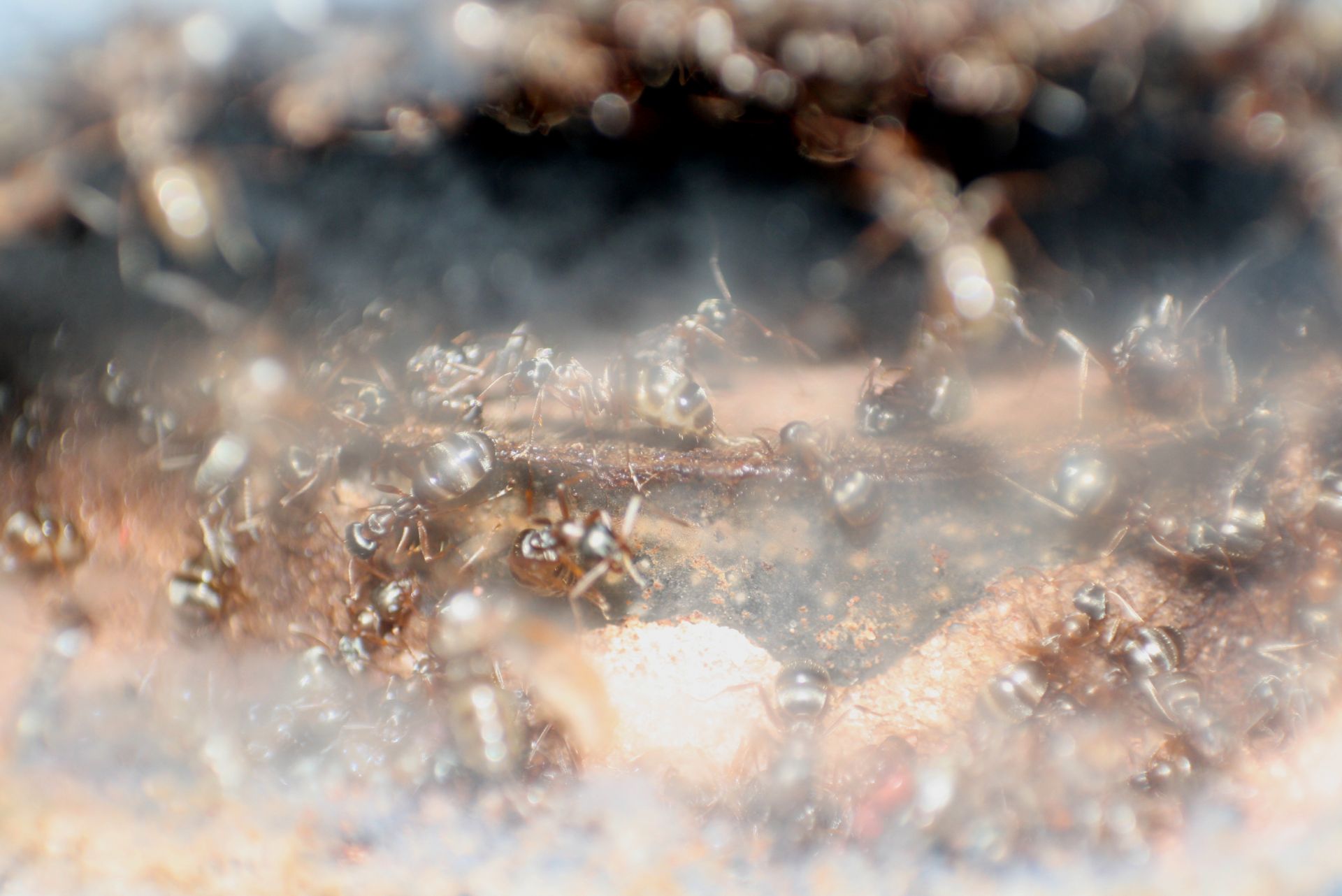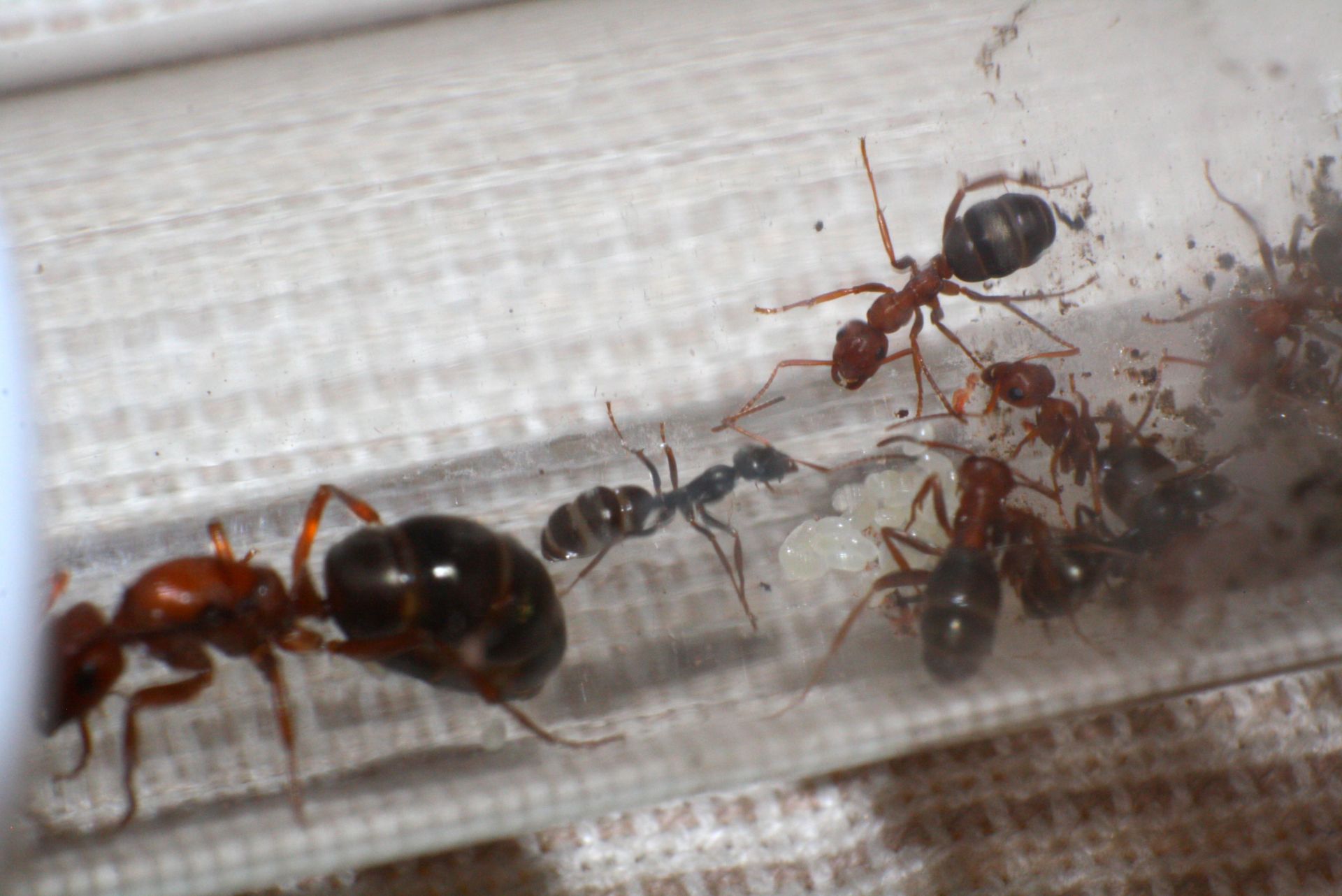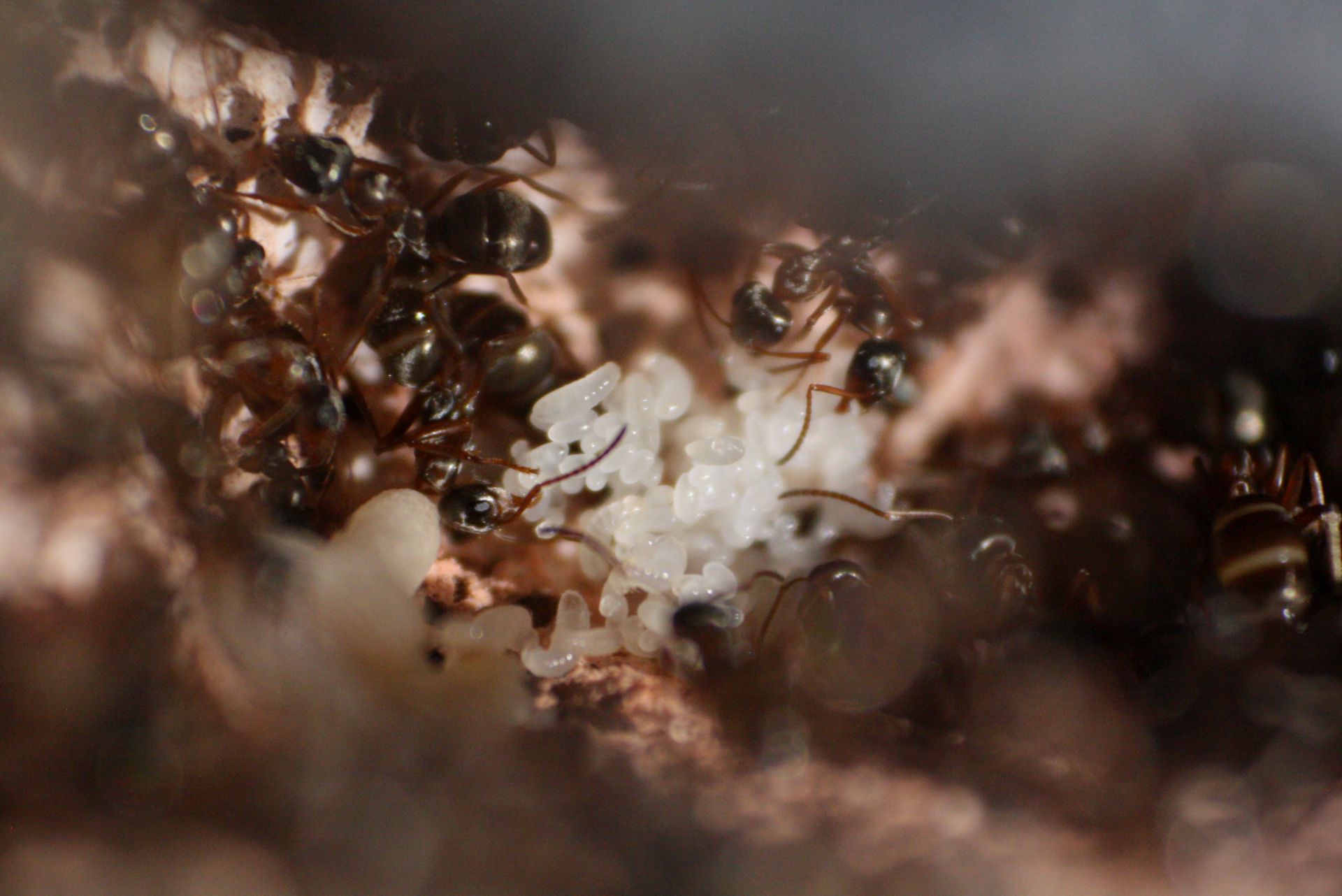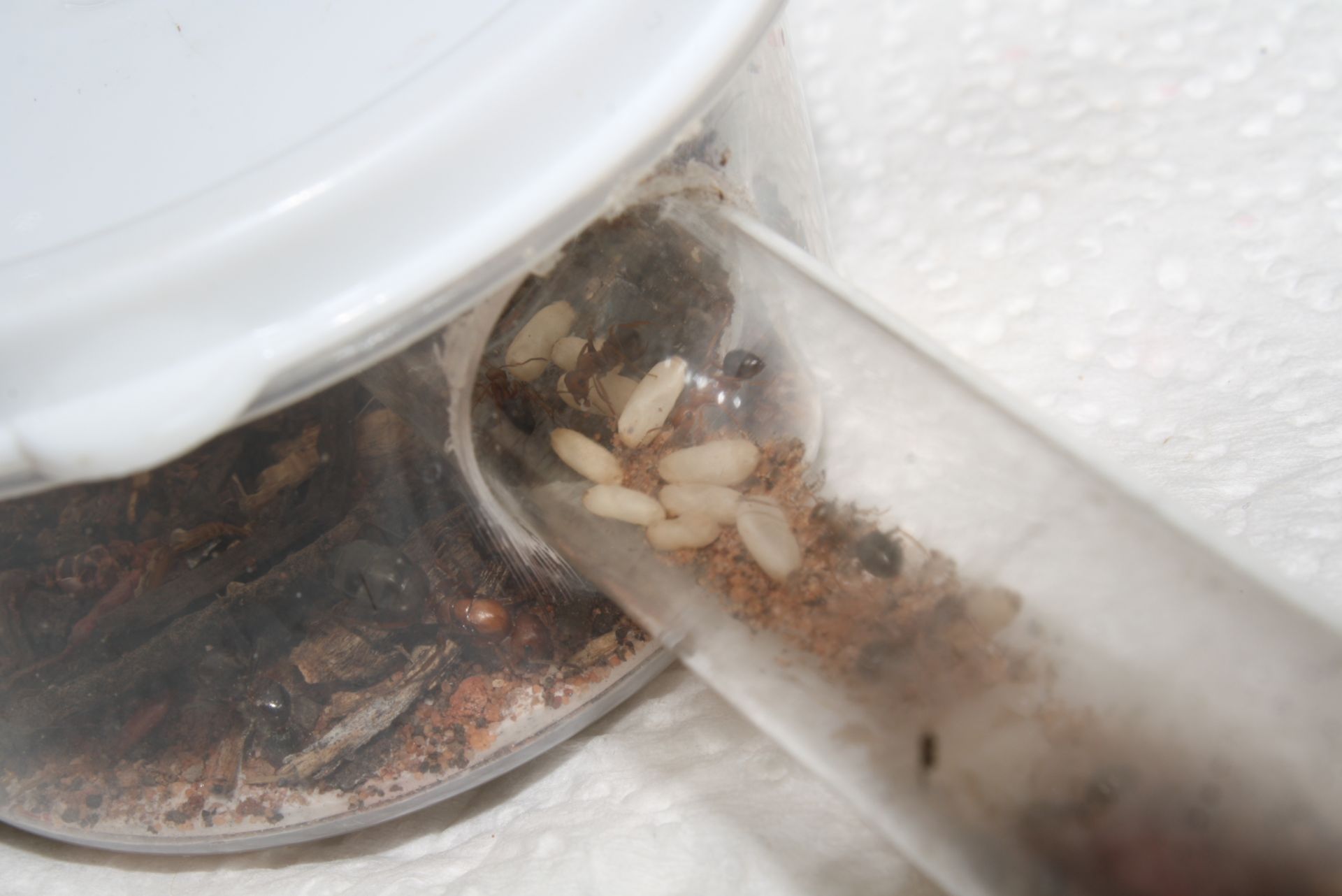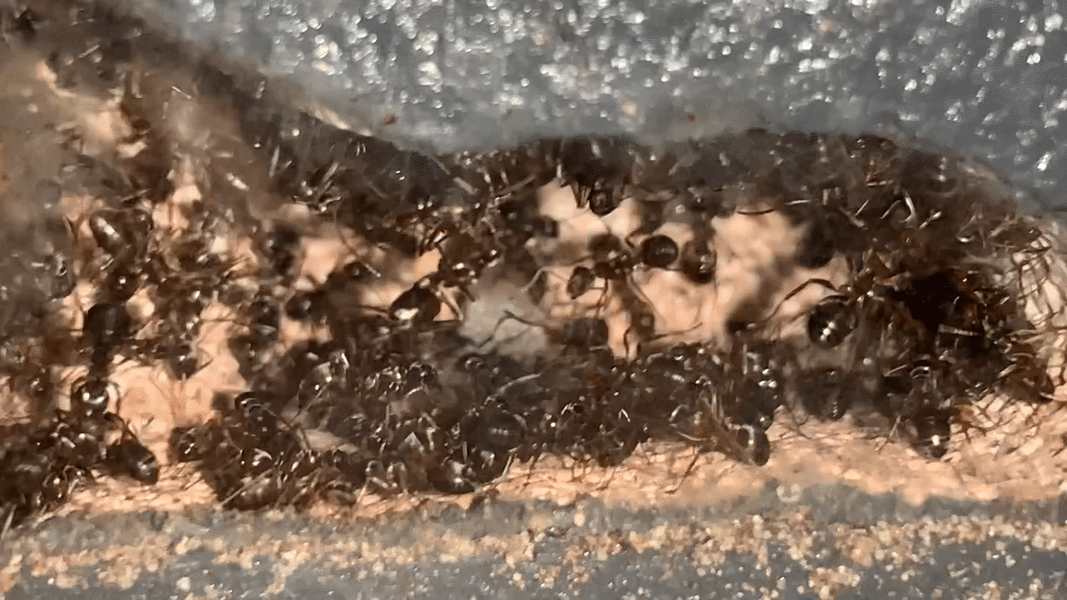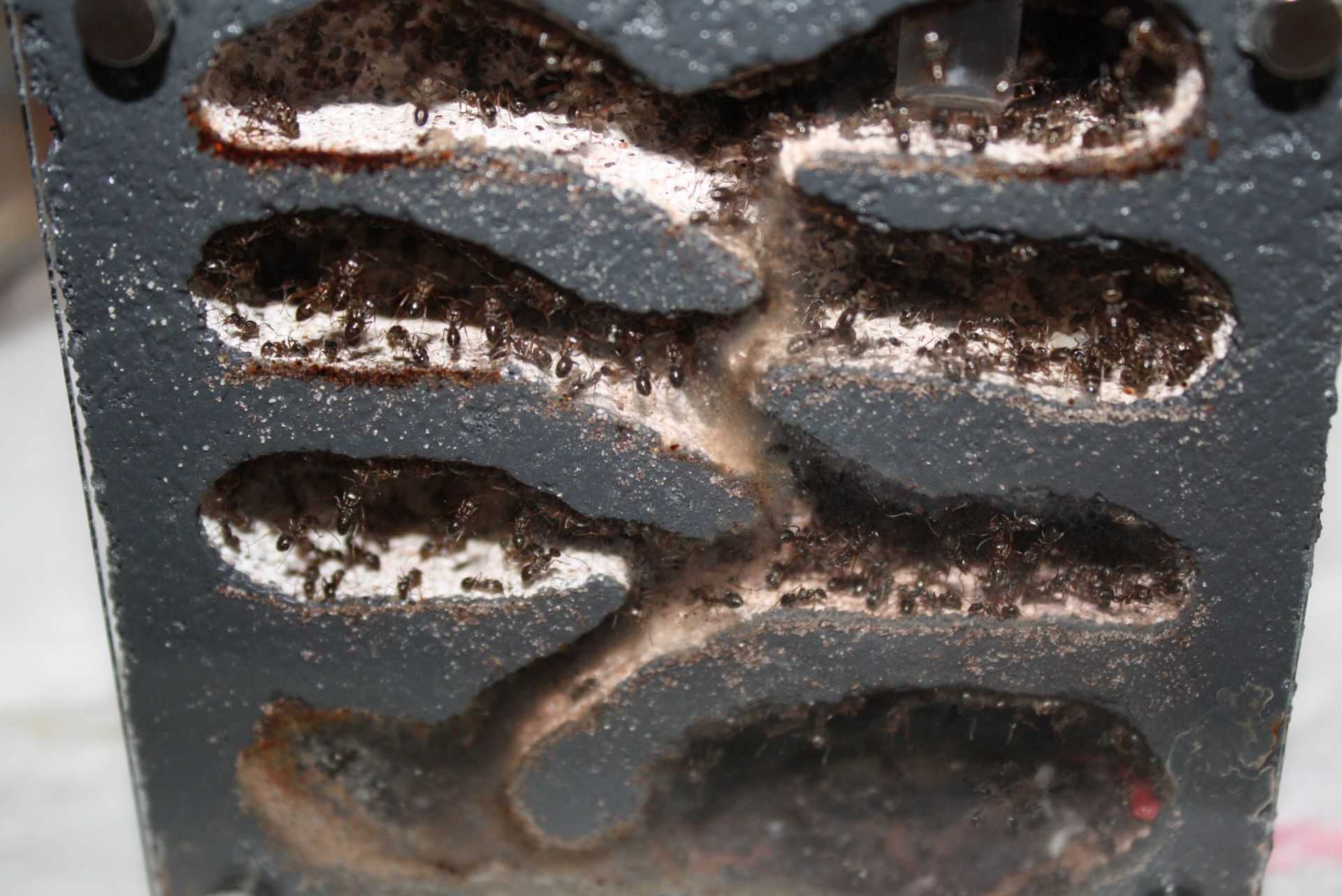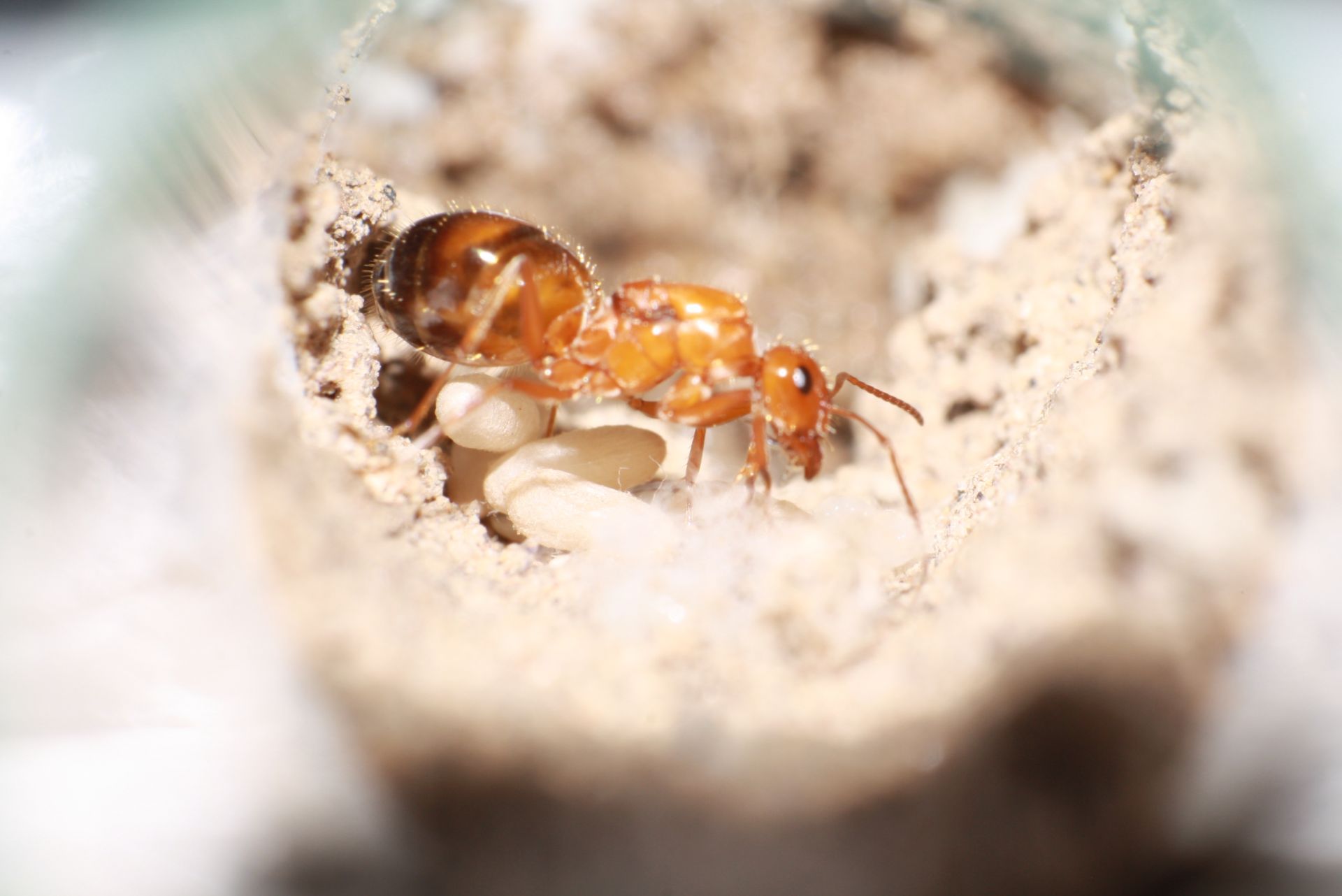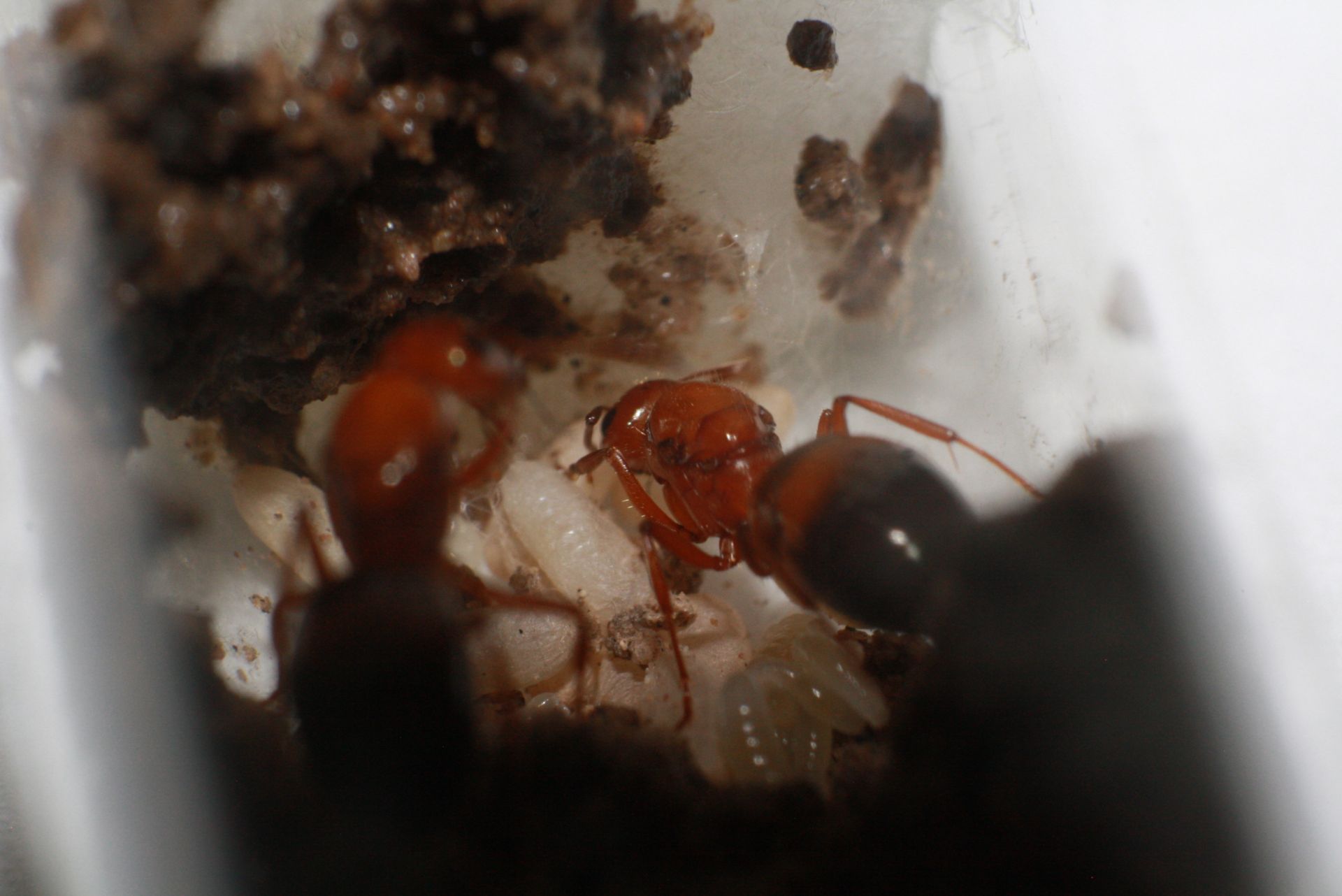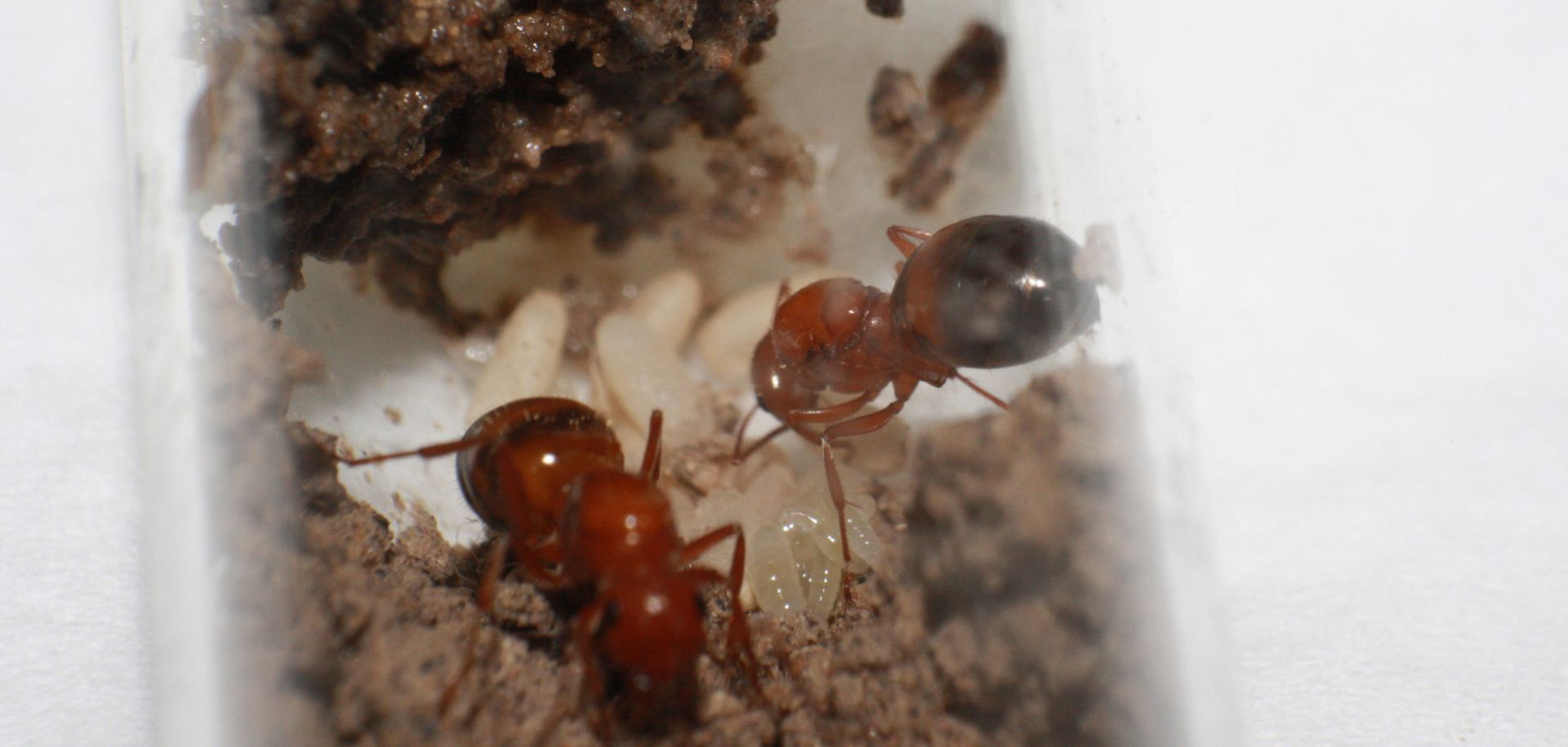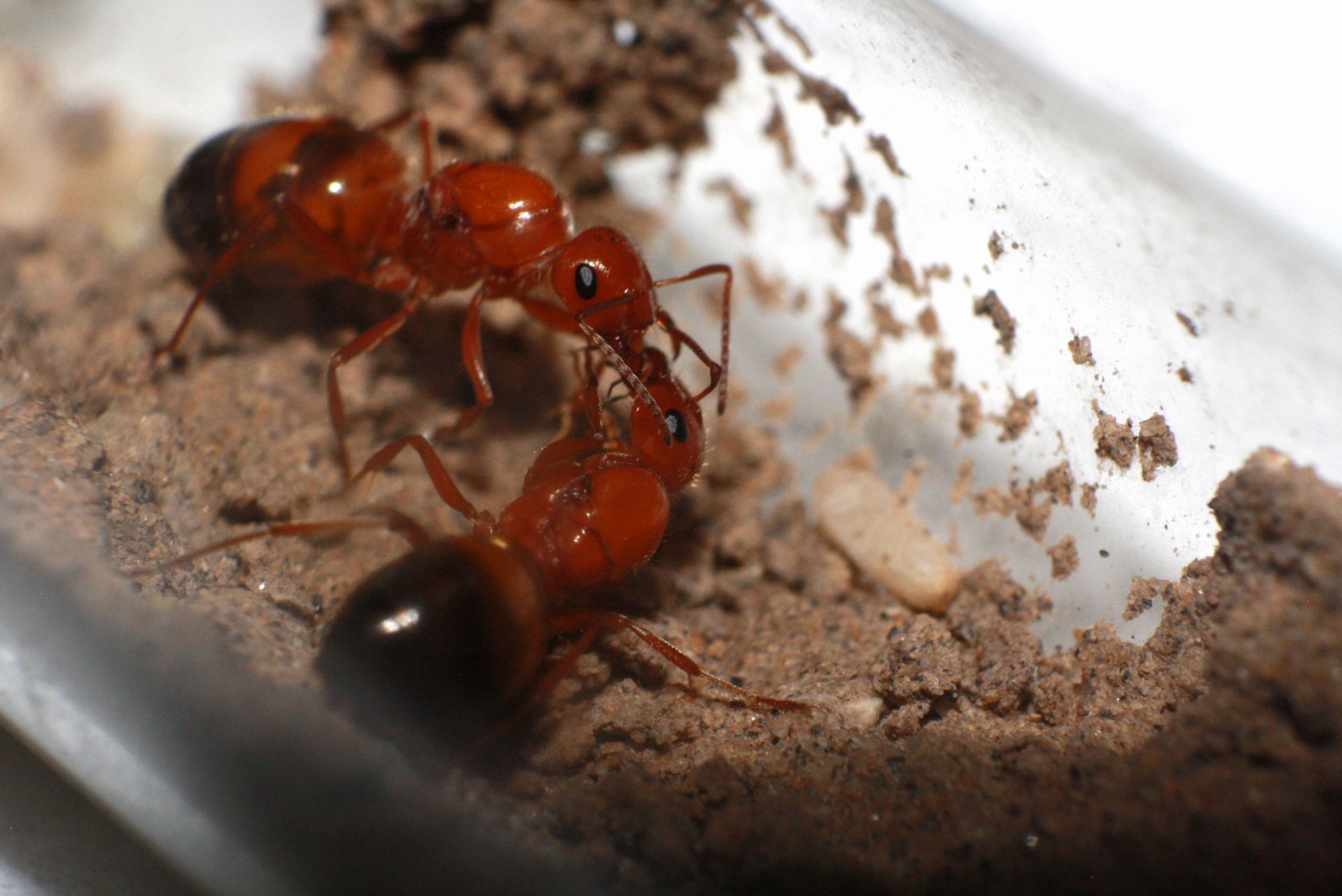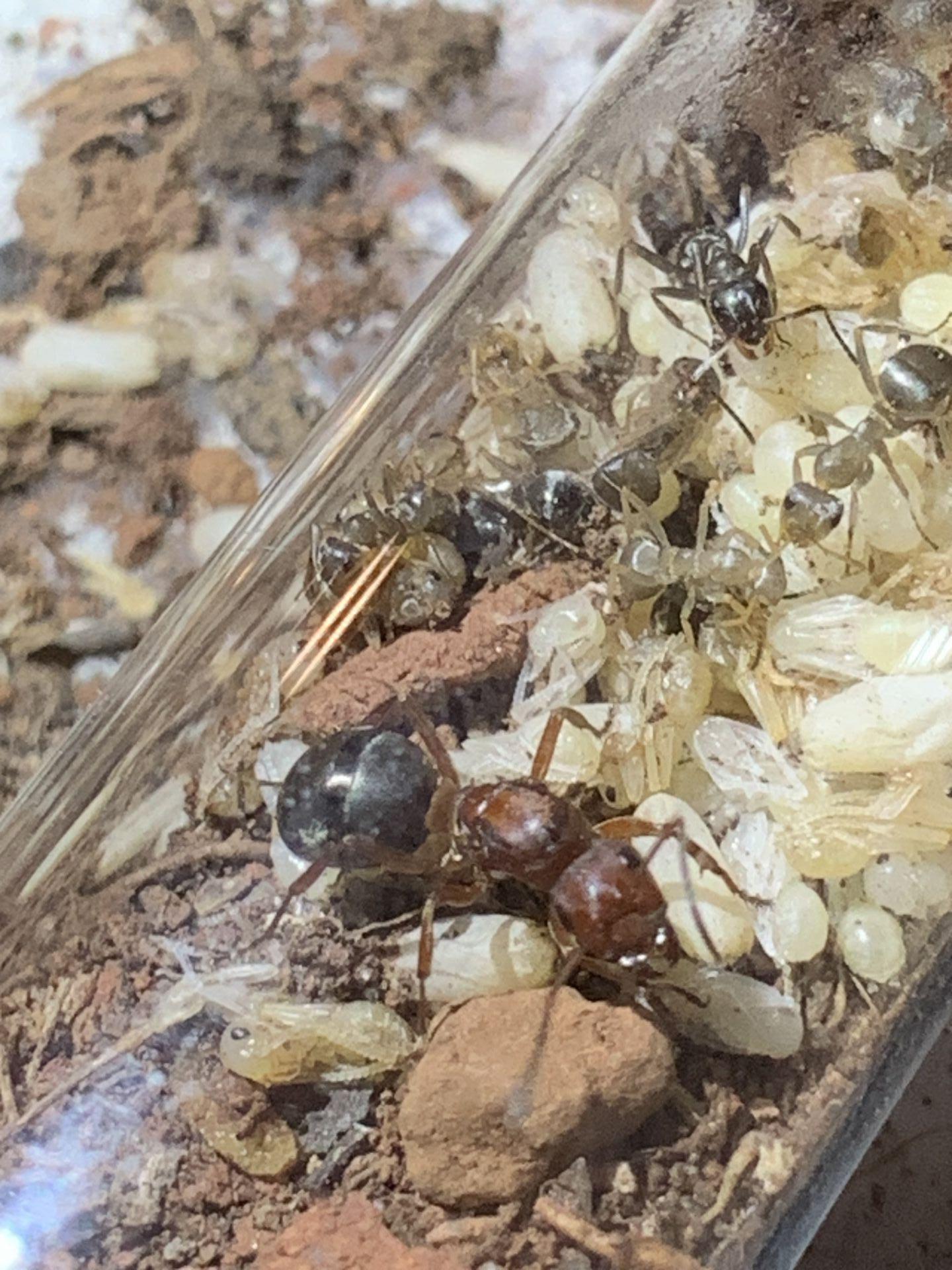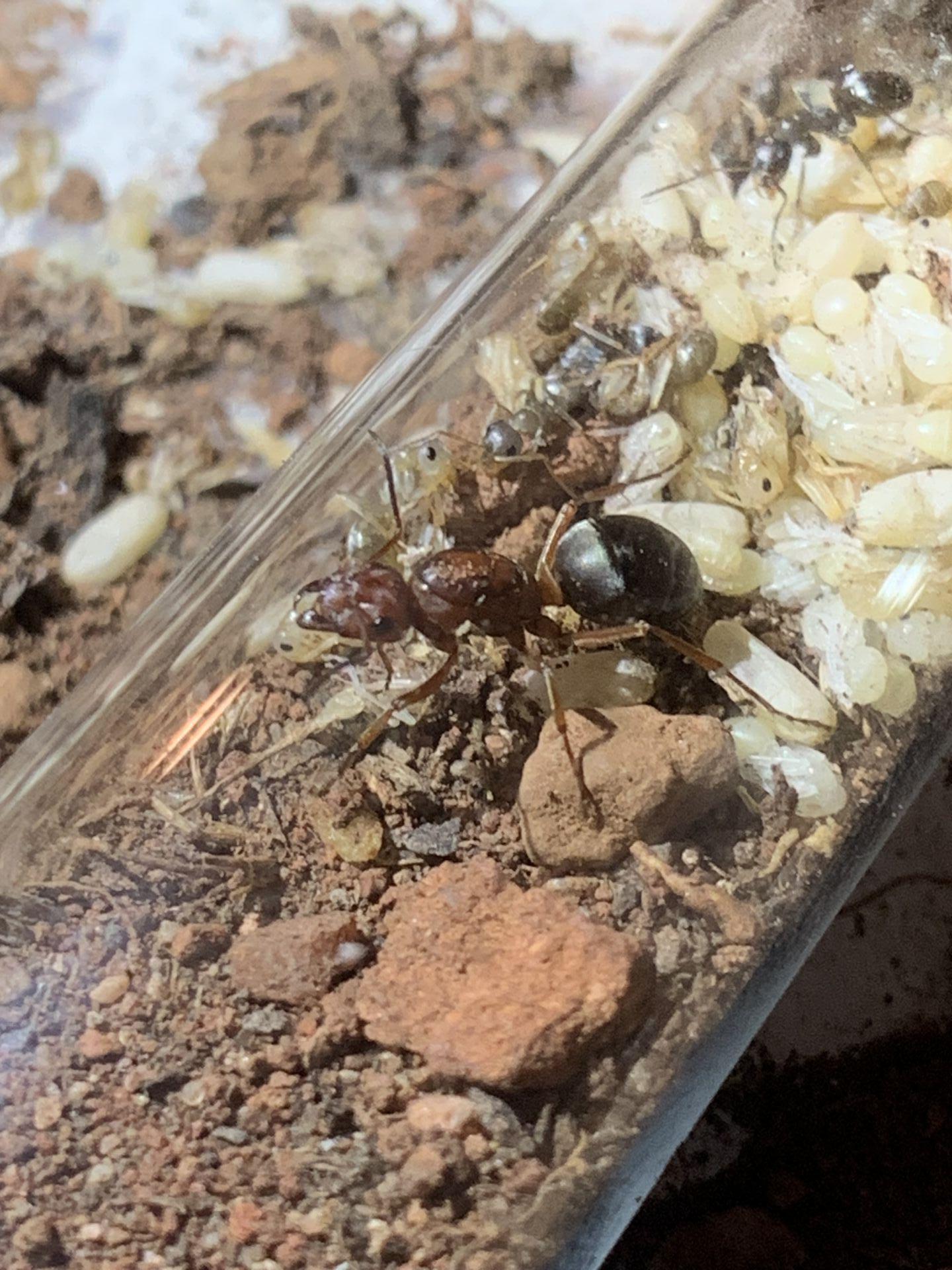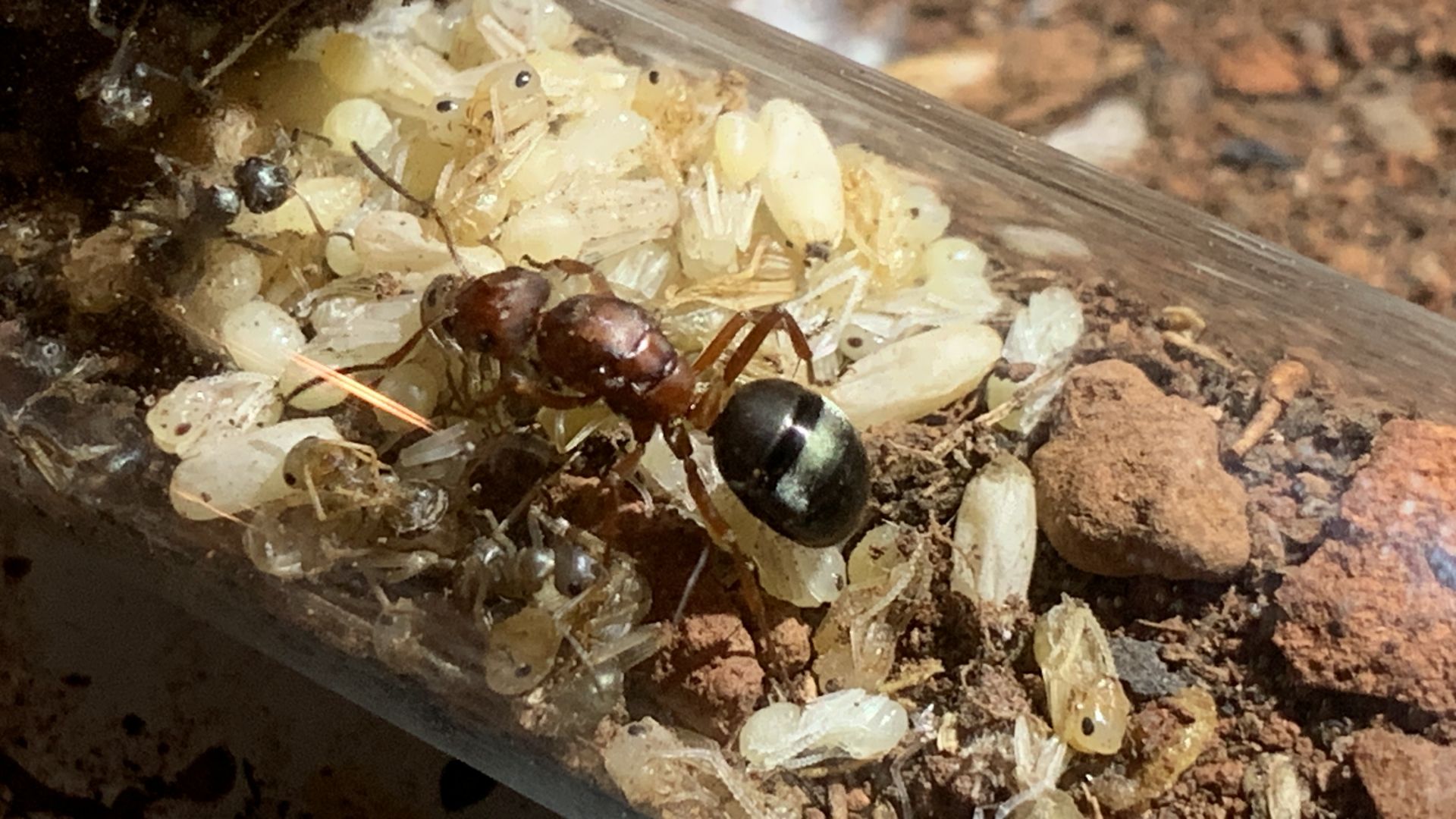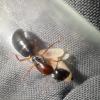I'm starting this thread to focus solely on my Formica colonies. Here's the original journal. At the moment, I have 5 colonies, each a different species. Identifying ants is not my strong suit, let alone Formica species. I'll list the colonies in order from largest to smallest in colony size. Colony B might not even be Formica, I'm still undecided. Hopefully as I get better pictures on this thread some people can step in and ID some of these species.
Colony A: Around 150 workers. Queen from my area in Utah Valley (spanish fork to provo).
Colony B: Around 50 workers. Colony from southern Utah Valley
Colony C: 30 workers, likely a subsericia group species. I found the queen in my area.
Colony D: 10 Workers. Queen from up north near Idaho
Colony E: 8 Workers. Colony from the same location as colony B
Colony A
2020 seaon
Queen was found in the 2020 season (sometime around late June). Due to toxic particles in their firebrick nest, most of the colony died off. I moved the remaining workers and queen out into one of my first home-made nests. When they came out hibernation, only four workers were left.
March 15 2021
I moved them into a THA mini hearth.
April 22
Lots of new brood!
May 26
Around 30 workers now, tons of insects being eaten every day. They created a chamber of sand over their water tower, limiting sight.
No more brood, around 150 workers.
February 21 2022
Out of hibernation, the colony already took protien today. The areas around the water towers look dark from defecation and over hydration on my part.
Edited by UtahAnts, February 21 2022 - 9:09 PM.




